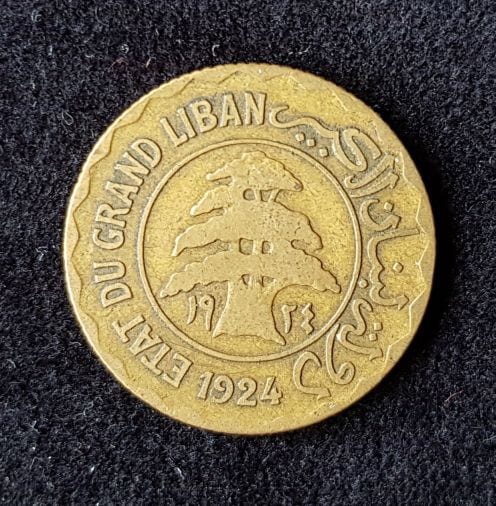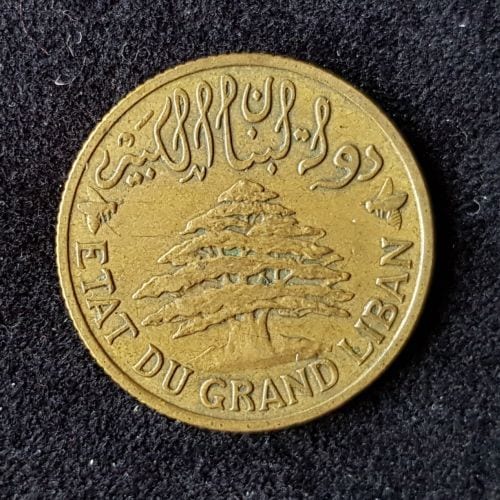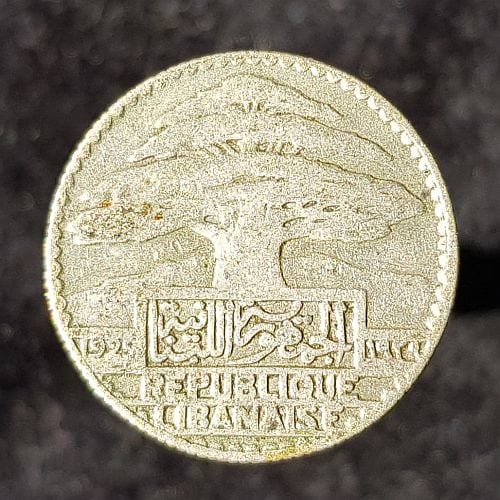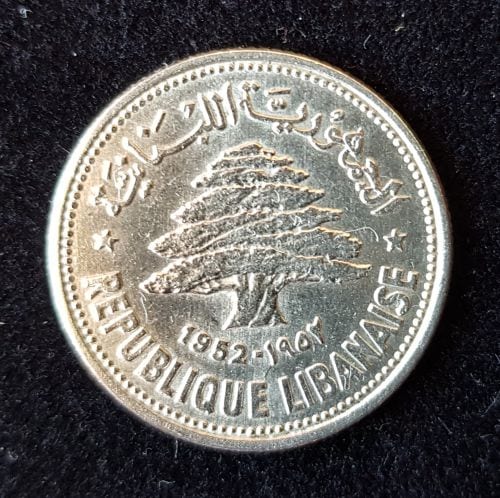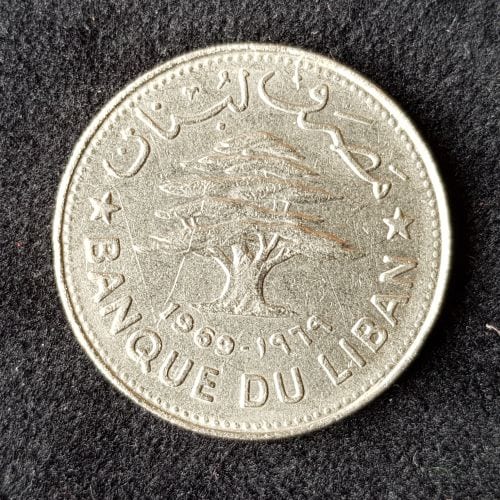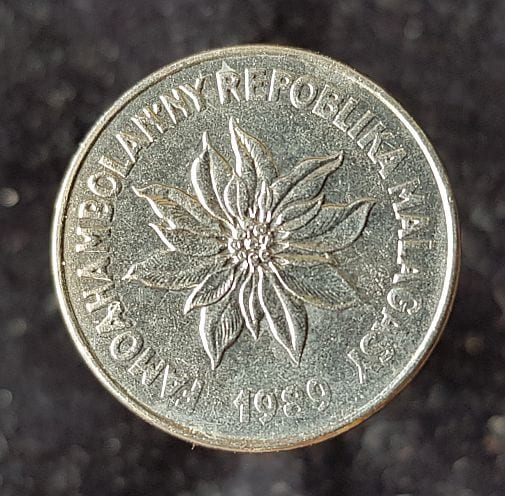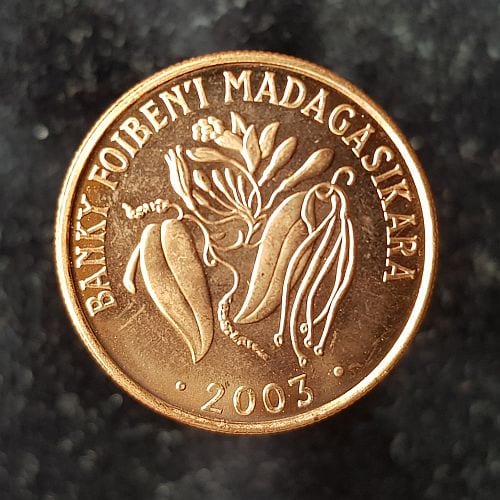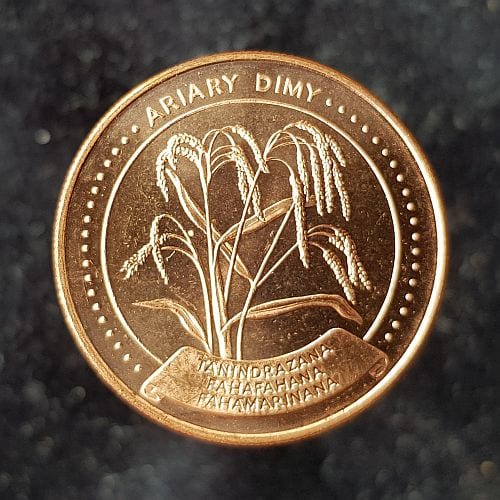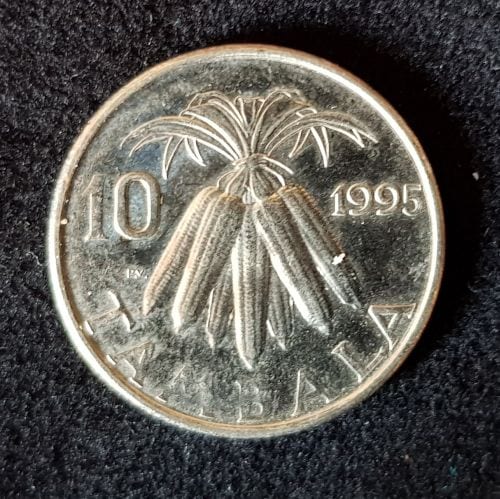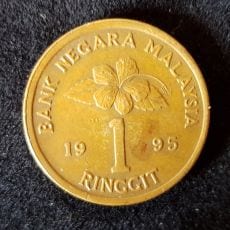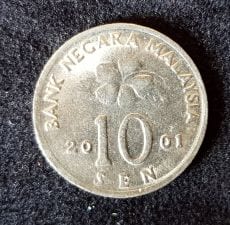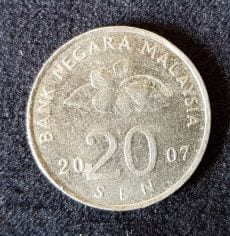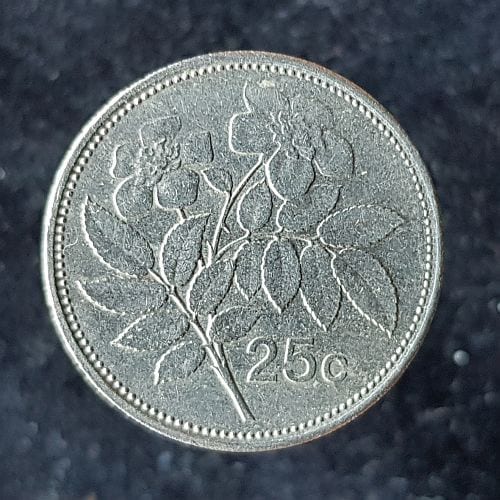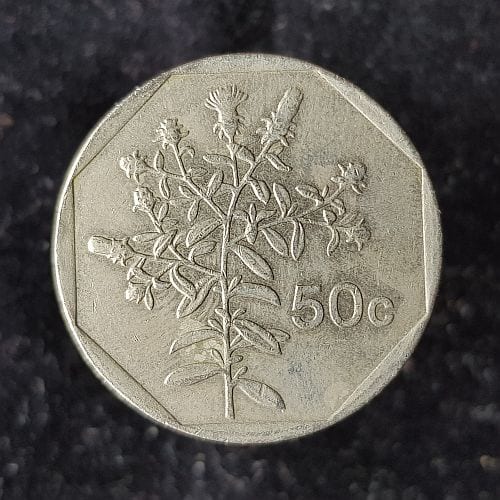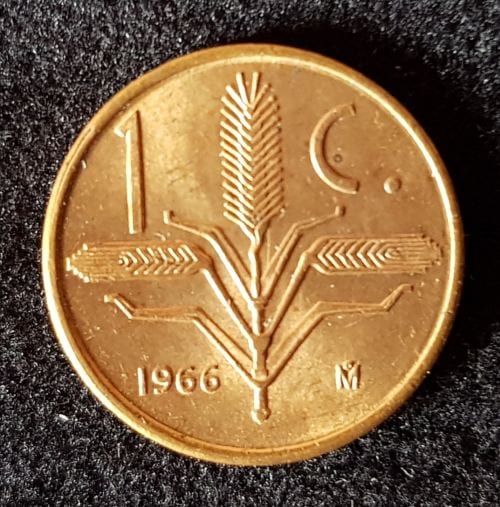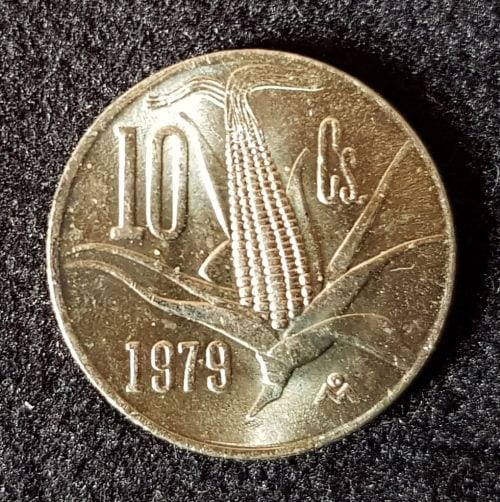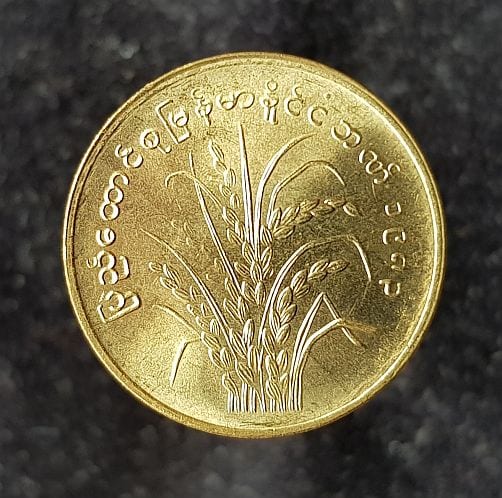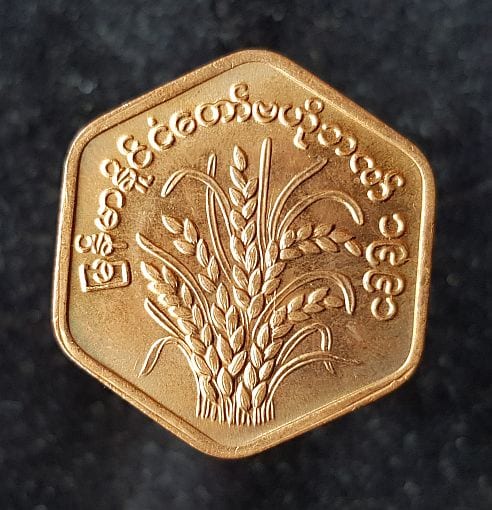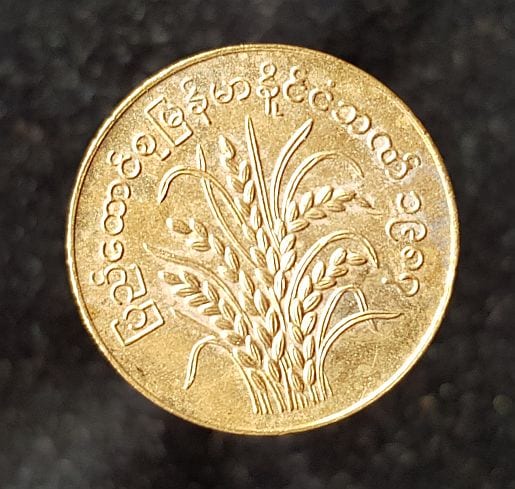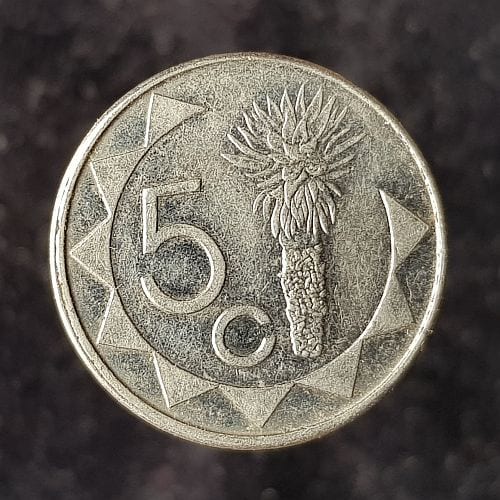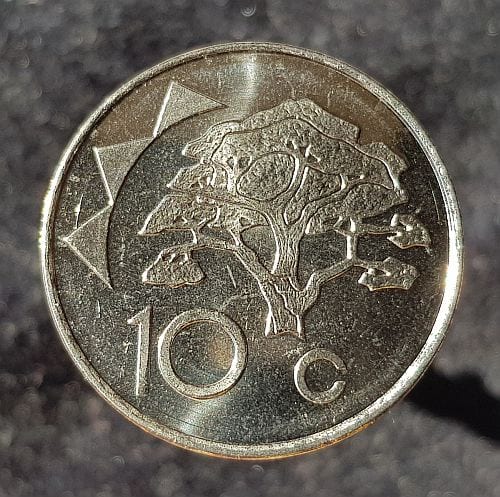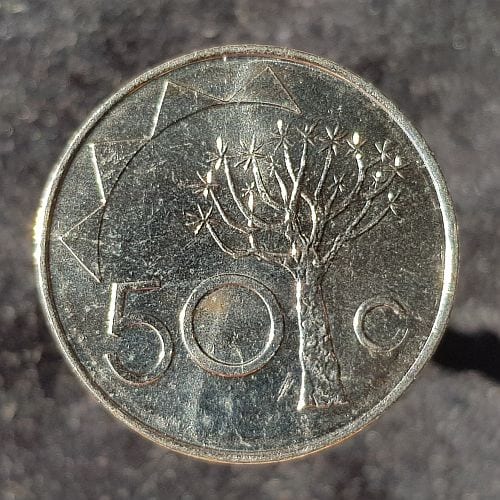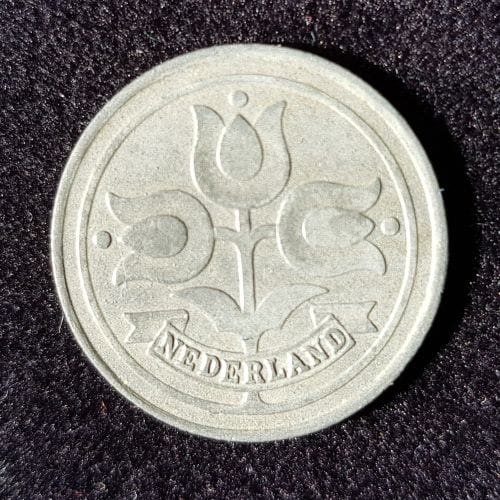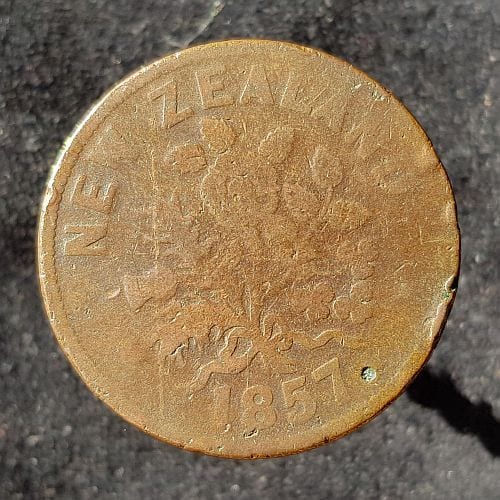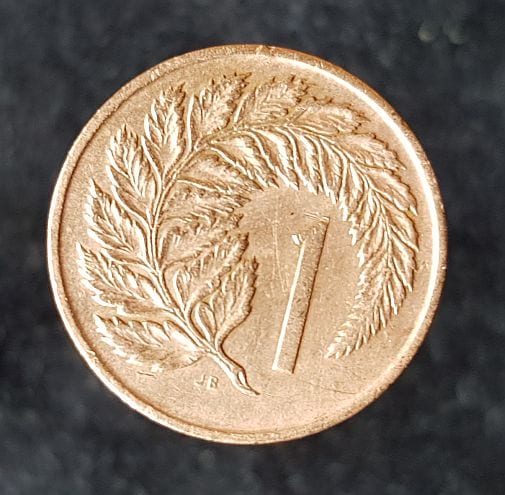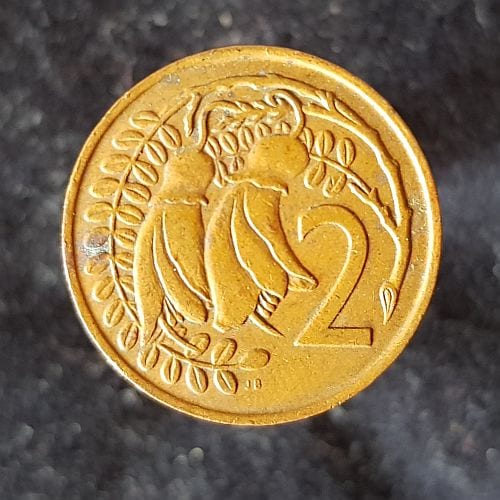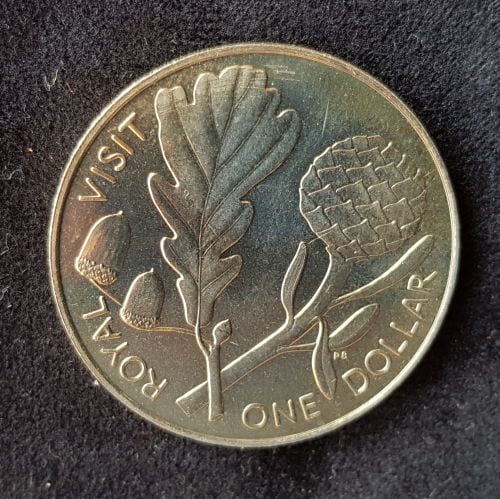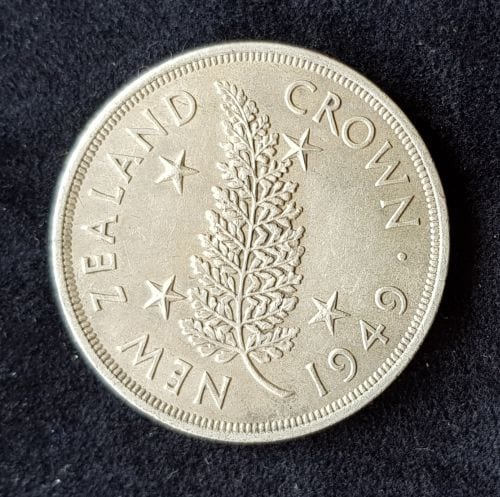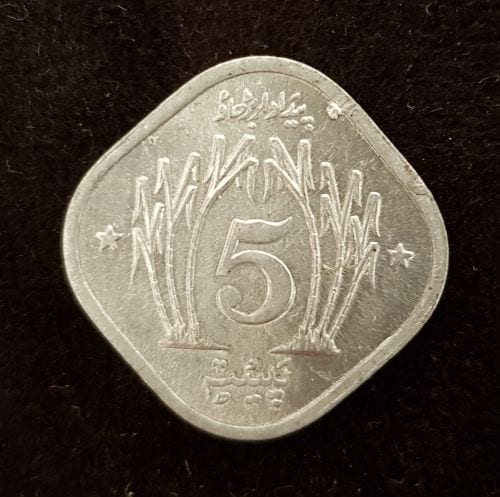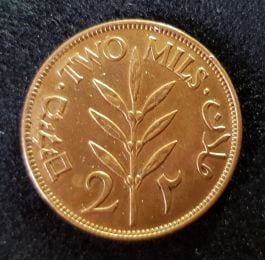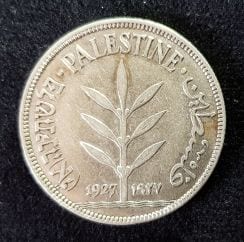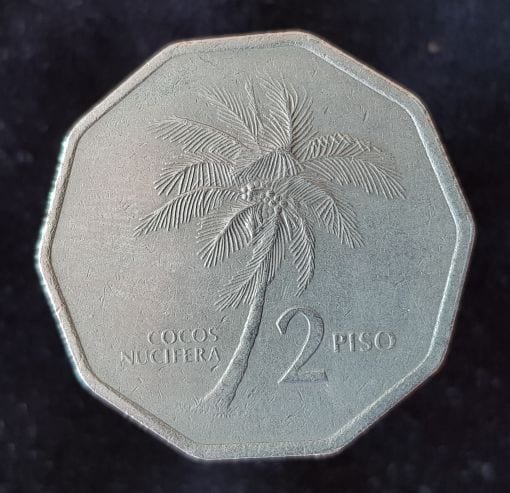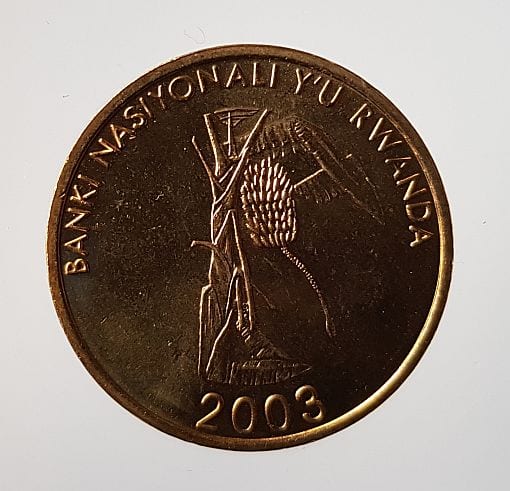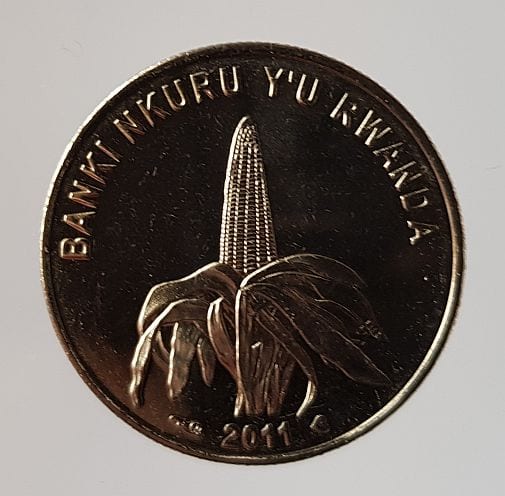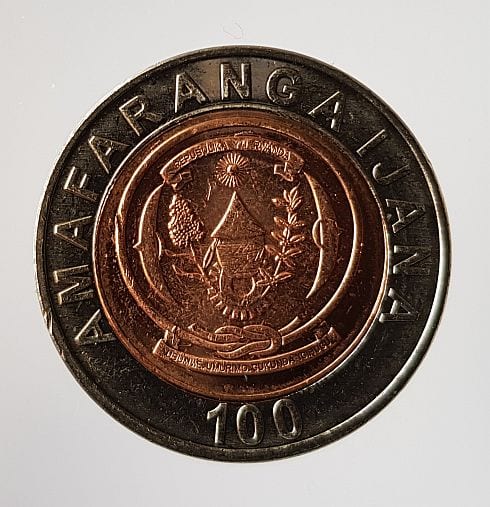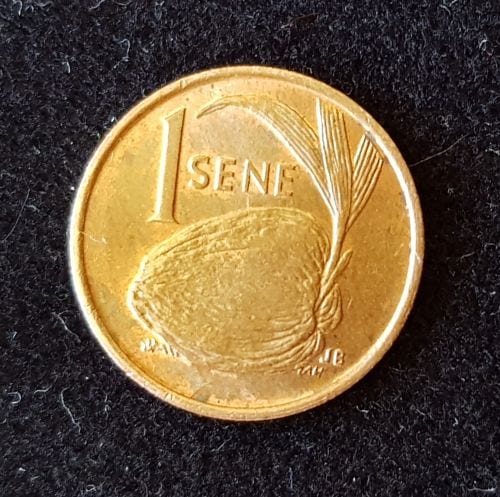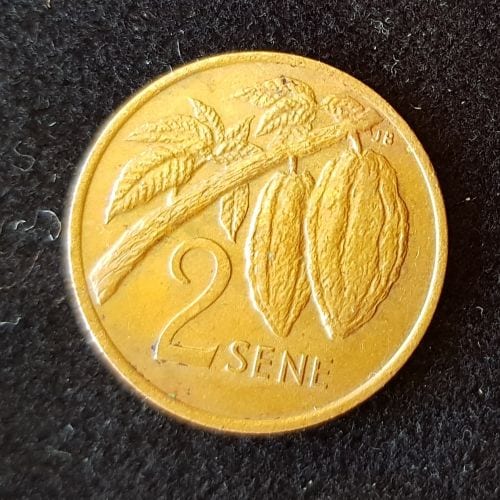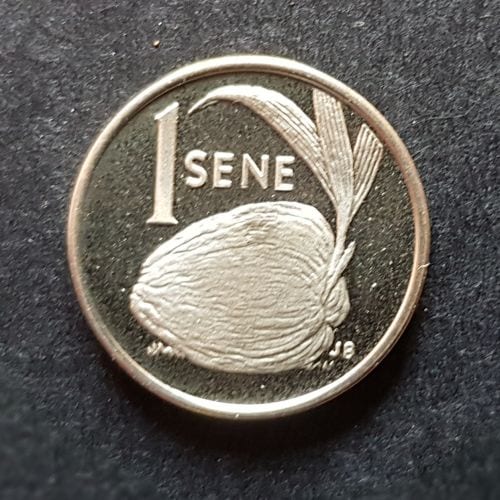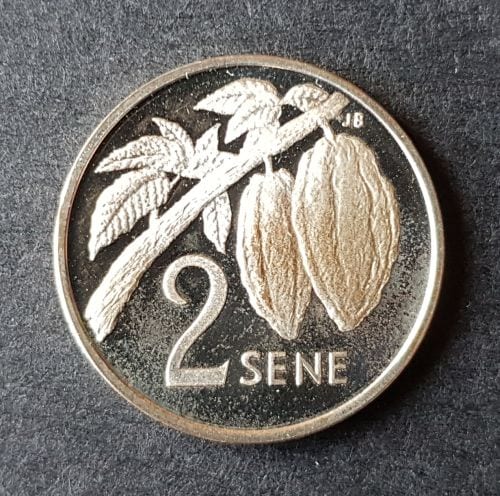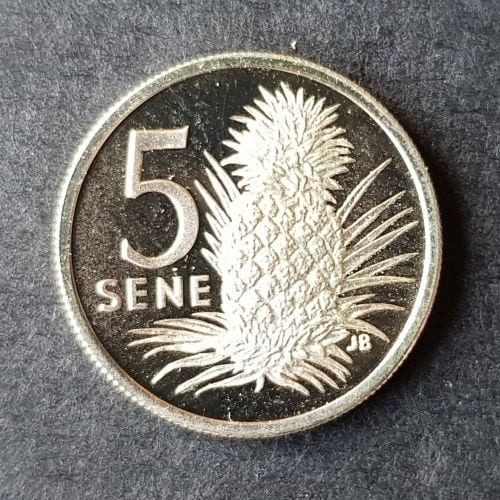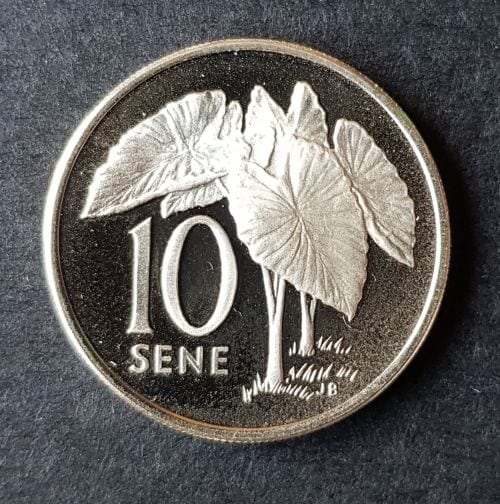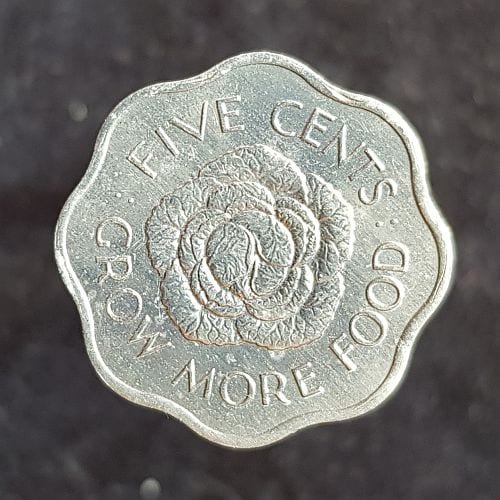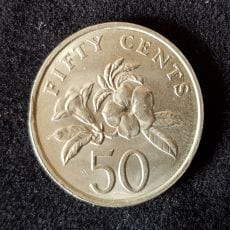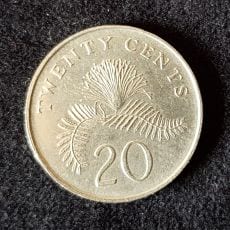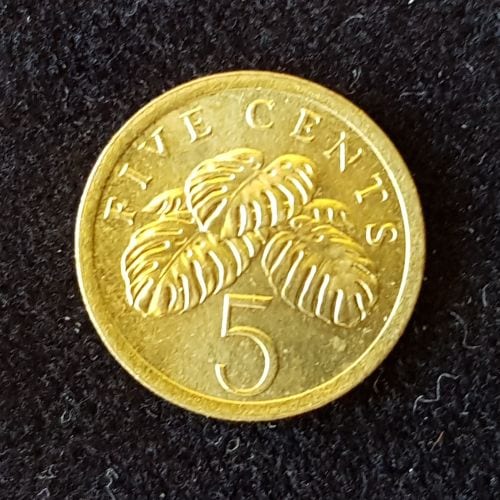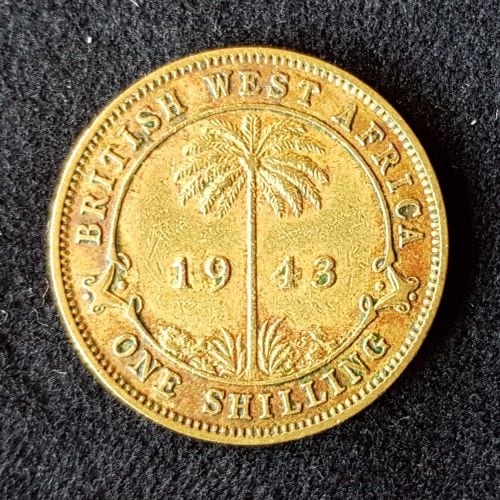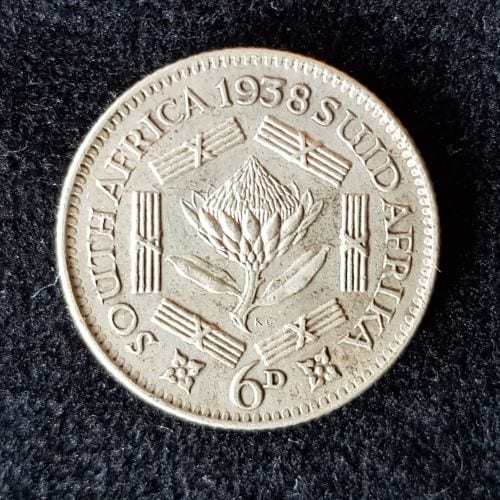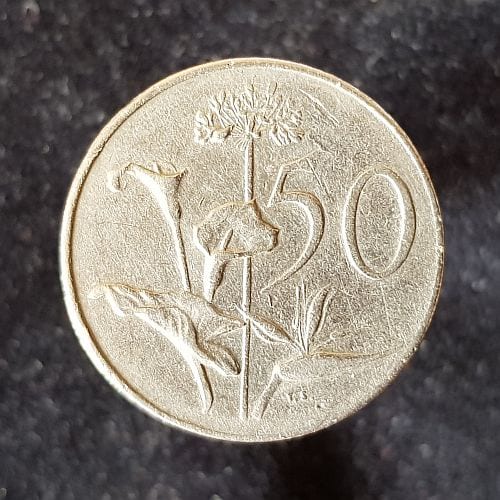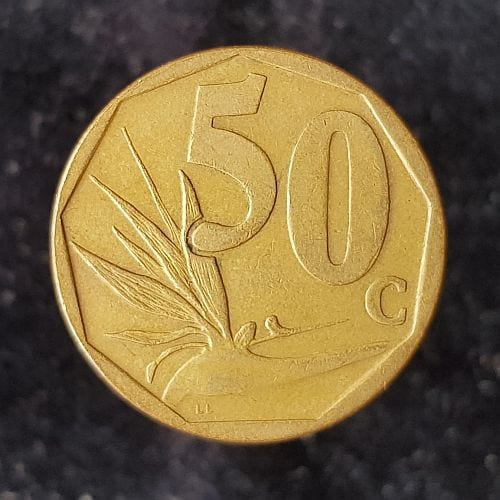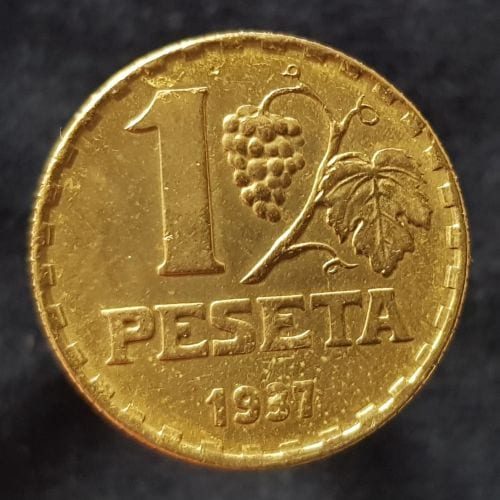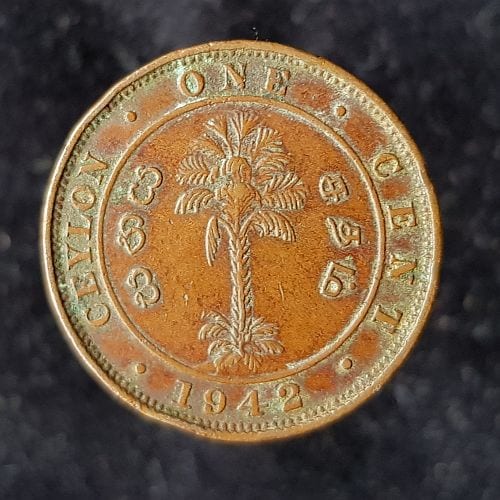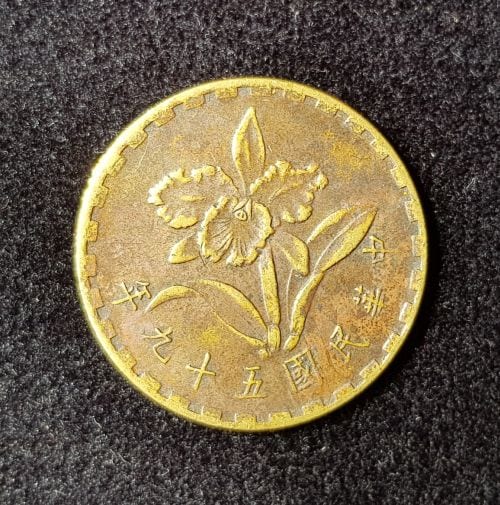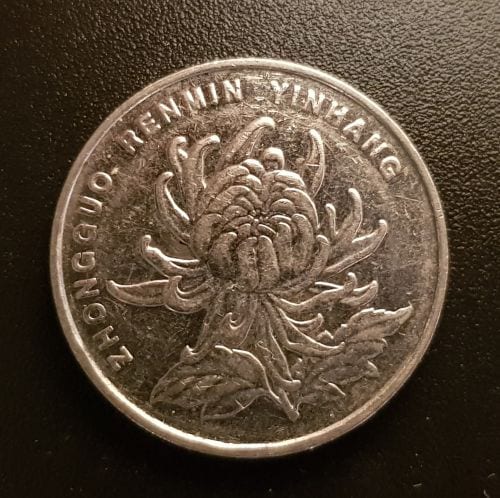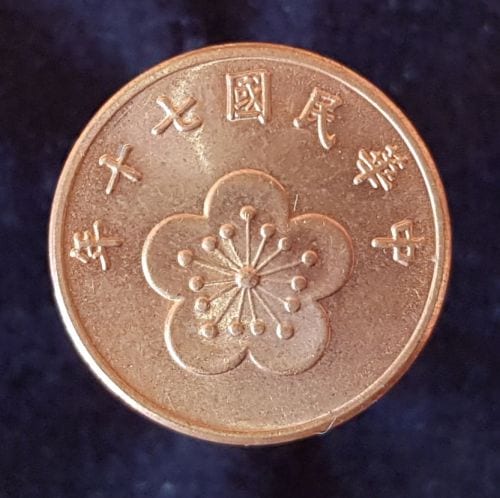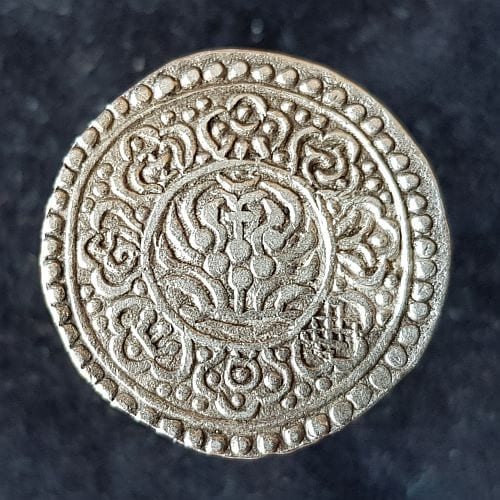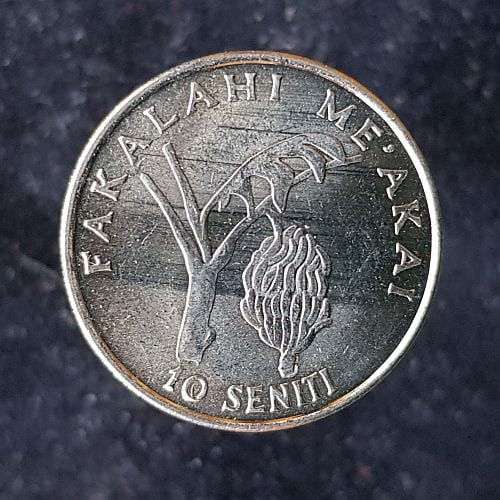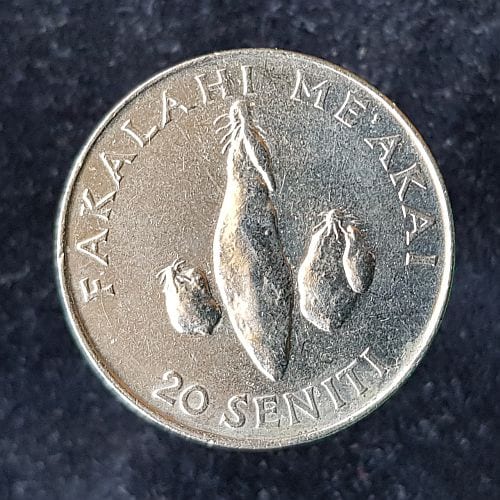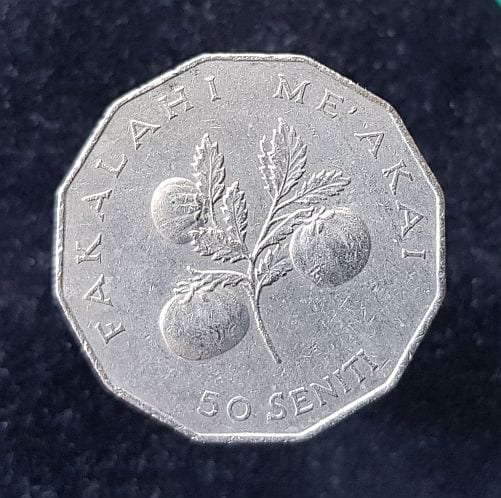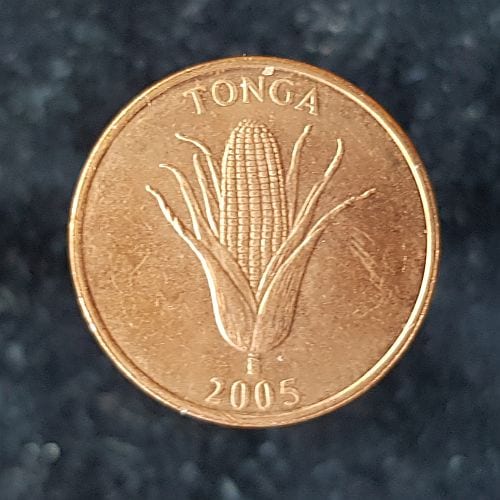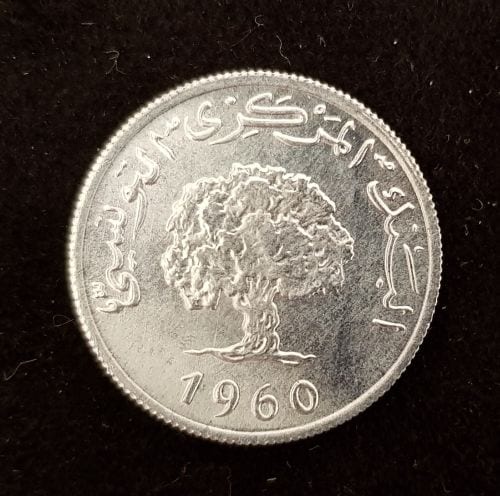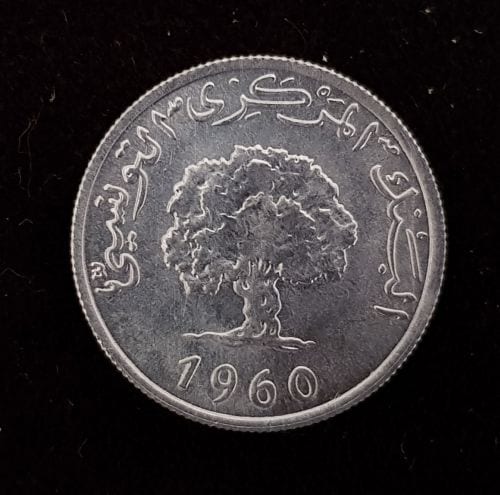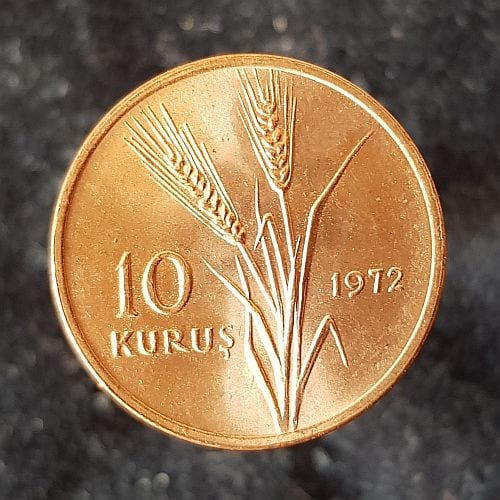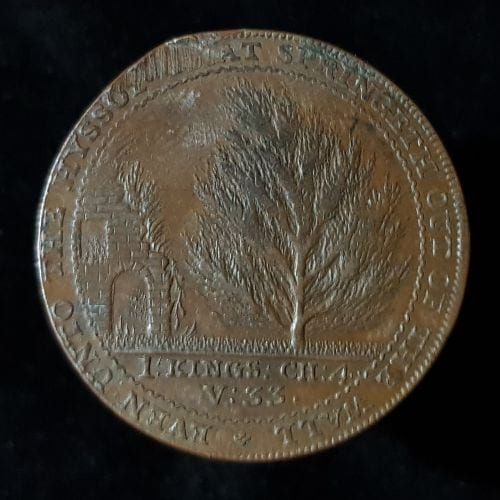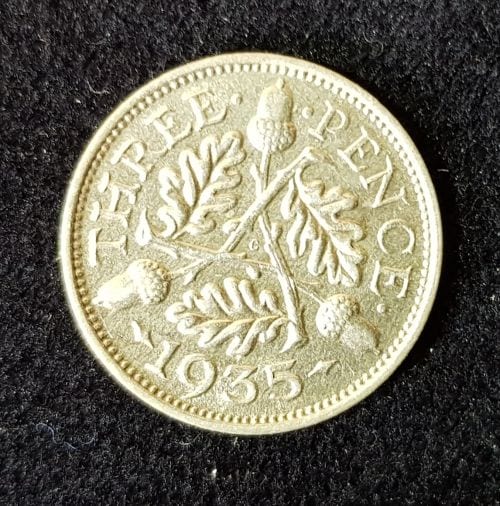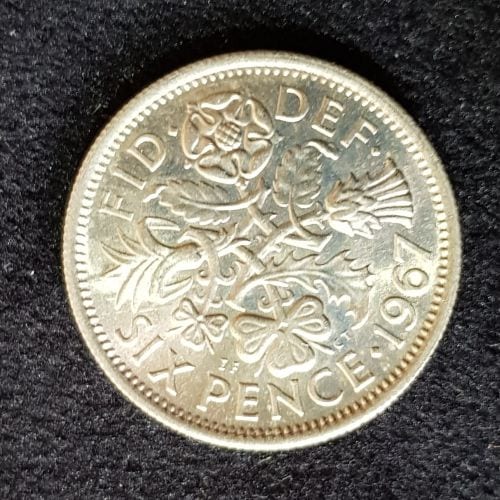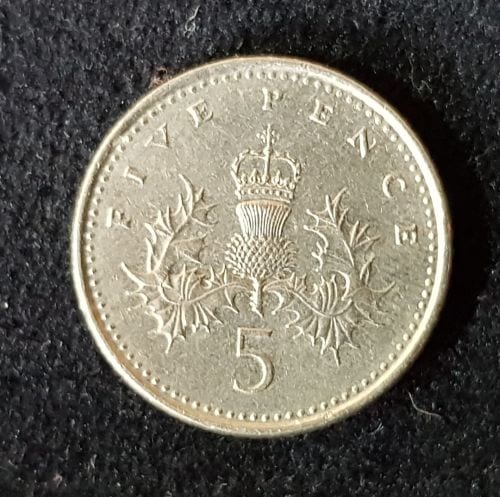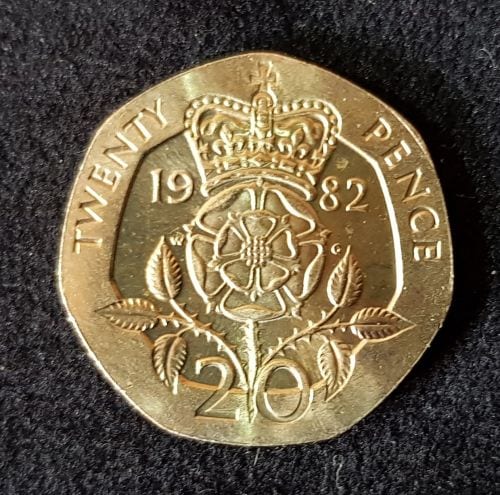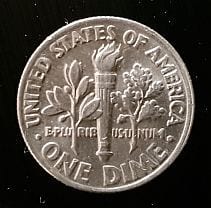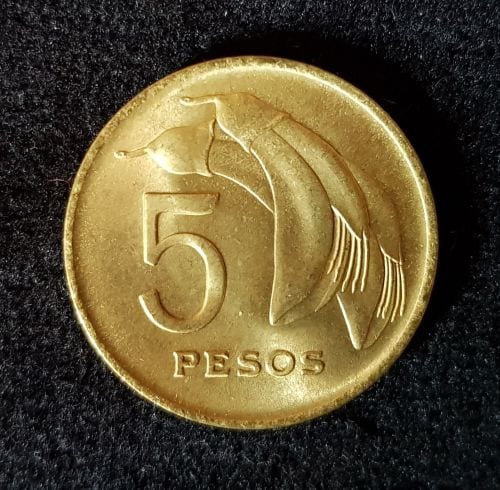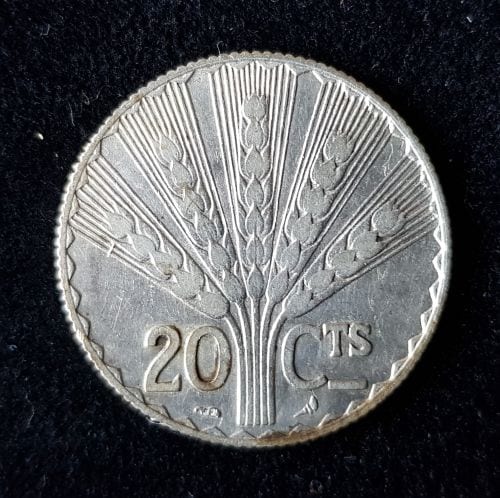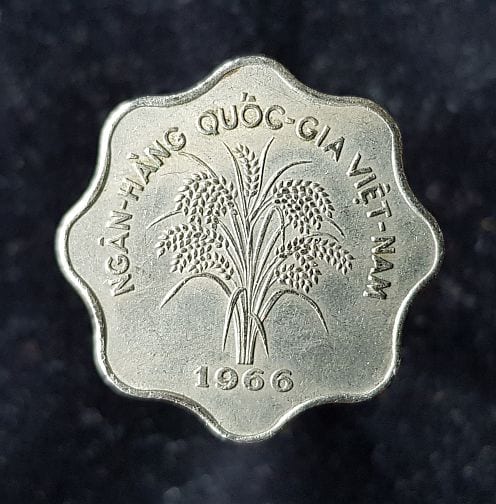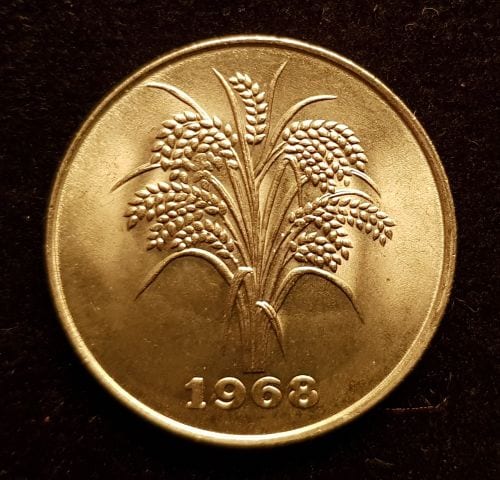
World Coin Gallery L-Z
This world coin gallery includes coins from countries from L-Z and their plant iconography.
Coins, banknotes and postage stamps are products of Industria (complex industrial market societies) that are now being replaced by email, plastic debit cards, and electronic fund transfer, as we move into the virtual dimension of the age of Informatia. The value of physical reminders of the past will certainly increase in the future because they provide a simple tangible window into the world of political, social, and cultural history, geography, art, and technological change. The following gallery of coin images gathers in one place the plant iconography of world coins over the last 2500 years. For added historical context I have given an introductory summary history for each country with comments on coinage. This information is often adapted from that given in Krause’s Standard Catalogue of World Coins.
The goal is to interpret changing human historical attitudes to plants over two and a half millennia through the medium of coin iconography.
The selection of coins presented here are, unless otherwise stated, those in my own numismatic collection. Unsurprisingly there is a lack of gold coins and expensive sets although I have endeavoured to refer to these in the text. Tokens are included where possible as they were often produced by established mints and carried depictions of plants e.g. the early colonial tokens of Australia and Canada.
I have concentrated on coins showing plants as specimen, where the plant is important as well as its decorative value – in wreaths etc. Inevitably the majority of plant images are emblems of various kinds rather than botanical or horticultural specimens.
I have also tried to include as many as possible of the world’s 195 sovereign countries that have released coins bearing specimen plants but, needless to say, it is incomplete.
Coins in the galleries are presented in alphabetical order of country and, mostly, chronological order from left to right and row to row.
Numismatics
Though historical interest is paramount, the numismatist is always concerned with value because building up a collection can be expensive, although prices paid for coins are mostly around half that listed in catalogues.
The coin captions containing numismatic information presented in the following order (as known):
Plant common name/plant scientific name/monarch/denomination/year/mint & number struck/metal/weight/diameter/width/grade/value/designer/reference
Historically it has often been the intention of a country to maintain parity between the face value of the coin and the value of the metal it contains, hence the coin denominations ascending in value from copper/bronze, to silver, to gold: but all great civilisations have resorted to ‘debasement’ in hard times and in our day coins have little metallic value so our money, both coins and notes, are ‘fiat money’ – money whose value is based on trust rather than the value of the object itself.
For collectors and investors, coins with metal content approaching face value have value for the metal alone and many people treat these as bullion, stacking them away as a form of investment. So, for example, British pennies and halfpennies originally minted in copper were, after 1860, minted in bronze. Pre-1919 British silver coins were made of sterling silver which was 92.5% pure silver: from 1919 to 1947 50% silver: then from 1947 the alloy cupronickel. American silver coins up to 1964 were 90% silver.
Today some mints deliberately strike bullion coins which they sell at a premium over the spot metal price on the markets as a means of making revenue. One well-known example is the Royal Canadian Mint’s Silver 1 oz Maple Leaf coin that is 99.9999 pure silver, the purest government-backed silver coins in the world. Coin catalogues (and the captions here) express silver content using a decimal point e.g. .925, .8, .5 etc.
For the coin collector obviously scarcity and interest play a major role in a coin’s additional numismatic value but, even more important than this is the physical condition of the coin itself. Even common coins can be worth a lot of money if they have not been in circulation.
Countries have different ways of ‘grading’ coins but the system described below is the most familiar and is the one used in the gallery captions. The value of a coin is related directly to its grading as given in coin catalogues. Inevitably there is a degree of subjectivity in the grading process.
F (Fine) – quite a lot of wear, but all the main features, most of its design, its date and lettering is still clearly readable.
VF (Very fine) – some wear but only to its higher points. Main designs visible. Relatively little circulation.
EF (Extremely fine) – very little wear, just faint at higher points and only visible on close inspection.
Unc. (Uncirculated) – No wear at all. Looks as it did when it left the mint with all the details intact.
There are various ways of indicating intermediate conditions, so if a coin is graded between VF and EF it might be shown the following ways: VF+, gVF, or VF/EF. aVF indicates that the coin is almost/about VF. There are other conventions: BU – Brilliant Uncirculated = uncirculated and with the original mint lustre (shine & colour).
Proof coins are early samples of a coin issue used to test the newly polished dies and for the production of archive coins: nowadays they are often struck in greater numbers for the numismatic market and can usually be distinguished from normal circulation coins by their sharper rims, designs and polished backgrounds.
In recent times there has been a trend towards simple and stylized graphic design with a cameo finish – where the relief (raised or recessed) features a frosted finish and the field (background) is mirror-like, or vice-versa. Cameo is usually seen on proof coinage. In 2006, the United States Mint issued the first ‘reverse proof’ coin, a variant of the American Silver Eagle, in which the relief is mirror-like and the field frosted.
LEBANON
Mints & Marks: (a) – Paris, privy marks only (u) – Utrecht, privy marks only
Currency: 100 Piastres = 1 Livre (Pound)
The Republic of Lebanon in the E Mediterranean between Syria and Israe has a population of 3.5 million, capital Beirut. The economy is based on agriculture, trade and tourism with fruit and other foodstuffs and textiles exported. In earliest recorded history Lebanon was a forested country of the Phoenicians who exploited its cedar trees, Cedrus libani. The mountains were a Christian refuge and notably for the Crusaders. Like Syria it was subdued by the Ottoman Turks early in the 16th century and with the collapse of the Ottoman empire after World War I, with Syria, became a French territory. Christian Lebanon was, on 1 Sept. 1920, proclaimed the State of Grand Lebanon (Etat du Grand Liban), a republic under French control given independence on 26 Nov. 1941, British and French troops leaving in 1946.
Cedrus libani – Cedar of Lebanon
10 PIASTRES – 1929 Silver .68 2.0g/17mm/reeded Mintage: 880,000 KM#6 Lec#33 Schön#8 – VF – $20
Cedrus libaniCedar of Lebanon
50 piastres – 1952 Ag 0.6/.0945oz/24mm 7,200,000 (u) KM#17 – aUnc. – $30
MADAGASCAR
Mints & Marks:(a) – Paris, privy marks only SA – Pretoria
Currency: 100 Centimes = 1 Franc
The French-speaking Indian Ocean Democratic Republic of Madagascar has a population of 10 million and capital Antananarivo. The economy is agricultural but there are bauxite deposits. Exports include coffee, vanilla, graphite, and rice. Immigration has occurred from SE Asia, Africa, Arabia and India with settlement beginning about 2,000 years ago. Portuguese navigator Diago Diaz sighted the island on 10 August 1500. British attempts at settlement during the reign of Charles I and by the French during the 17th and 18th centuries failed as the island became a refuge and supply base for Indian Ocean pirates. The British accepted the imposition of a French protectorate in 1886 in exchange for British recognition in Zanzibar. Madagascar forcibly became a French colony in 1896 but Britain occupied the island after the fall of France, 1942, returning it to FRance in 1943. On14 October 1958 the Malagasy Republic became an autonomous state and on 27June 1960, a sovereign, independent nation within the French Community. The Malagasy Republic was renamed the Democratic Republic of Madagascar in 1975.
Euphorbia pulcherrima – Poinsettia
1 FRANC – 2002 Stainless Steel/2.40g/17mm/1.59mm Engr: Raymond Joly KM# 8 – Unc – $2
Vanilla
10 FRANC (2 Ariary) – 1989 Cu clad steel/3.23g/21mm/1.48mm/reeded FAO series KM# 30 – Unc – $2
MALAWI
Mints & Marks:
Currency: 12 Pence = 1 Shilling 2 Shillings = 1 Florin 5 Shillings = 1 Crown 20 Shillings = 1 Pound
Ruler:
The Republic of Malawi (formerly Nyasaland) has a population of 7 million, capital Lilongwe. The economy is pragricultura with exports of tobacco, tea, peanuts and cotton. The Portuguese were the first Europeans to reach the Malawi area although missionary-explorer Dr. David Livingstone arrived at Lake Malawi on 16 Sept. 1859, remaining to make further explorations in the 1860’s. There were subsequent conflicts between Scottish missionaries and Arab slave traders. The procurement of development rights by Cecil Rhodes in 1884 stimulated British interest and the establishment of the Nyasaland protectorate in 1891. In 1953 Nyasaland reluctantly joined the Federation of Rhodesia and Nyasaland and was granted self-government within the federation with Nyasaland the independent nation of Malawi declared 6 July 1964, becoming a republic two years later. Malawi is a member of the Commonwealth of Nations.
MALAYSIA
Mints & Marks: Malaya: I – Calcutta Mint (1941) I – Bombay Mint (1945) No Mint mark – Royal Mint: Malaysia FM ¬Franklin Mint, U.S.A. (from 1975-1985 the Franklin Mint produced coinage in up to 3 different qualities. Qualities of issue are designated in ( ) (M) MATTE – Normal circulation strike or a dull finish produced by sandblasting special uncirculated (polish finish) or proof quality dies. (U) SPECIAL UNCIRCULATED – Polished or proofl ike in appearance without any frosted features. (P) PROOF – The highest quality obtainable having mirrorlike fields and frosted features.
Currency: Malaya 100 Cents = 1 Dollar, Malaysia 100 Sen = 1 Ringgit (Dollar)
Ruler: British
Malaya, formerly of the British Commonwealth is in the southern Malay peninsula. It has 11 states: unfederated states of Johore, Kelantan, Kedah, Perlis and Trengganu, and federated states of Negri-Sembilan, Pahang, Perakand Selangor – former members of the Straits Settlements Penang and Malacca. Malaya was occupied by Japan from 1942 to1945. Malaya gained full independence on 31 Aug. 1957, becoming part of Malaysia in 16 Sept. 1963.
The independent limited constitutional monarchy of Malaysia occupies the southern Malay Peninsula and northern Borneo with a population of 15.4 million, capital: Kuala Lumpur. The economy is based on agriculture, mining and forestry with exports Rubber, tin, timber and palm oil. As a federation of Malaya (Johore, Kelantan, Kedah, Perlis, Trengganu, Negri Sembilan, Pahang, Perak, Selangor, Penang, Malacca), Singapore, Sabah (British North Borneo) and Sarawak. Following two serious racial riots involving Malays and Chinese, Singapore withdrew from the federation on Aug. 9, 1965. Malaysia is a member of the Commonwealth of Nations.
MALTA
Mints & Marks: M
Currency: Reform coinage 1982 – Present; 10 Mils = 1 Cent; 100 Cents = 1 Lira
Ruler: British until 1964
The Republic of Malta is an island in the Mediterranean Sea between Sicily and North Africa with a parliamentary democracy that includes the islands of Gozo and Comino, a population of 386,000 and capital Valletta. Economically it has small manufacturing facility for clothing, textile yarns and fabrics, with knitted wear exported. Over 3,500 years Malta was ruled successively by Phoenicians, Carthaginians, Romans, Arabs, Normans, the Knights of Malta, France, and then Britain. Napoleon seized Malta in 1798. The French were removed by a Maltese insurrection assisted by Britain as, in 1814, Malta willingly joined the British Empire. Full independence was gained in Sept. 1964 though Malta remained in the Commonwealth with the British monarch as nominal head of state. Malta became a republic on Dec. 13, 1974 remaining a member of the Commonwealth of Nations. The president is Chief of State: the prime minister is the Head of Government.
Olea europaea – Olive branch (Zebbuga)
2 CENTS 1986 CuNi 2.26 g. 17.78 mm; edge reeded 280,000 Rev: Zebbuga branch KM# 79 – EF – $3
Rosa sempervirens – Ghirlanda (Maltese emblem), Evergreen Rose
25 CENTS – 1986 Mintage: 3,090,000 Cu-Ni 6.19g/25mm/incuse security reeding Obv: Arms with coastal scene, rising sun, a traditional Maltese boat (‘Luzzu’), a shove, pitchfork, and Opuntia cactus. Rev: Two roses on sprig with denom. KM#80, Schön#84 – VF – $3
MEXICO
Mints & Marks: M (written as Mo in catalog) – Originally the mintmark of the Mexico City Mint. However, although mint headquarters are still in Mexico city, the mint itself was moved to San Luis Potosi in the early 1980s but the Mo mintmark was retained.
Currency: Currency: 100 Centavos = 1 Peso
The United States of Mexico has a population of 100 million, capital Mexico City with an economy based on agriculture, manufacturing and mining and the export of cotton, silver, coffee, and shrimp. Mexico supported Indian civilizations 1,500 years before conquistador Hernando Cortes conquered the wealthy Aztec empire of Montezuma in 1519-21. Cortes founded a Spanish colony that lasted for about 300 years as New Spain which extended from Guatemala to today’s Wyoming and California, today’s northern boundary established by the secession of Texas during 1836 and the war of 1846-48 with the United States. Independence from Spain was declared on 16 Sept. 1810 (Mexican Independence Day) and achieved by General Agustin de Iturbide in1821 who became emperor in 1822 but deposed when a republic was established a year later. The land, social, economic and other reforms of the Reform Constitution on 5 Feb. 1917 established the ground for economic development and democracy.
MYANMAR
Under British rule from 1886 to 1948
Currency: (Until 1952) 4 Pyas = 1 Pe 2 Pe = 1 Mu 2 Mu = 1 Mat 5 Mat = 1 Kyat NOTE: Originally 10 light Mu = 1 Kyat, eventually 8 heavy Mu = 1 Kyat. Indian Equivalents 1 Silver Kyat = 1 Rupee = 16 Annas 1 Gold Kyat = 1 Mohur = 16 Rupees UNION OF BU.
The ChulaSakarat (CS) dating is sometimes referred to as BE-Burmese Era and began in 638 CE. The Republic of the Union of Myanmar (formerly Burma) is adjacent to the Bay of Bengal and the Andaman Seawith a population of 38.8 million and capital Yangon (Rangoon) until 2005, then Naypyidaw. Economy agricultural with rice its major product accounting for about 40 % of its exports. Other exports are minerals, petrol, lead, tin, silver, zinc, nickel cobalt, and precious stones. The British East India Company established posts in the Bay in 1612 expanding to the whole of Burma in the Anglo-Burmese Wars of 1824-86 in annexation to British India. Upper Burma was annexed in 1885 and the Burmese coinage remained in circulation until 1889, when Indian coins became current throughout Burma. A separate British colony with limited self-government was established in 1937, truly independent on Jan. 4, 1948, with a parliamentary democracy. Following constant conflict, in 1962 General Ne Win became a socialist chief of state, and in 1974 a socialist republic was established under one-party rule, the name changed to Myanmar in 1989. Myanmar coins often have Indian denominations, though inscribed in Burmese units. Coins were again issued in the old Burmese denominations after independence in 1948, but decimal issues replaced these in 1952.
NAMIBIA
Currency: Currency 100 Cents = 1 Namibia Dollar
The Republic of Namibia (formerly German SW Africa, then SW Africa) on the Atlantic coast of southern Africa has to north Angola, east Botswana, and south by South Africa. Population 1.4 million and capital Windhoek. Economy based on export of diamonds, copper, lead, zinc, and cattle. On June 17, 1985 the Transitional Government of National Unity was instigated. Independence was achieved on March 12, 1990 within the Commonwealth of Nations. The President is the Head of State; the Prime Minister is Head of Government.
Aloe sp. – Aloe plant
5 CENTS – 2015 Ni plated steel 2.20 g/17 mm/plain Obv: National arms Rev: Value left, aloe pt in 3/4 sun design KM# 1 – aUnc – $1.0
NETHERLANDS
Mints & Marks: D – Denver, 1943-1945 P – Philadelphia, 1941-1945 S – San Francisco, 1944-1945 MINT PRIVY MARKS Utrecht Date Privy Mark 1806-present Caduceus MINTMASTERS’ PRIVY MARKS U. S. Mints Date Privy Mark 1941-45 Palm tree Utrecht Mint Date Privy Mark 1888-1909 Halberd 1909 Halberd and star 1909-1933 Seahorse 1933-42 Grapes 1943-1945 No privy mark 1945-69 Fish 1969-79 Cock 1980 Cock and star (temporal) 1980-88 Anvil with hammer 1989-99 Bow and arrow 2000 Bow, arrow and star NOTE: A star adjoining the privy mark indicates that the piece was struck at the beginning of the term of office of a successor. (The star was used only if the successor had not chosen his own mark yet.) NOTE: Since October, 1999, the Dutch Mint has taken the title of Royal Dutch Mint.
Currency: Currency: to 29 January 2002 – 100 Cents = 1 Gulden
Rulers: Wilhelmina I, 1890-1948 Juliana, 1948-1980 Beatrix, 1980-2013
The Western European Netherlands facing the North Sea and bordered by Belgium and Germany has a population of 16.4 million, capital: Amsterdam with government at The Hague. The economy is based on dairy farming and industry with exports of chemicals, yarns, fabrics, and meat products. A territory of Charlemagne’s empire in the 8th and 9th centuries the Netherlands fell under the control of Burgundy and the Austrian Hapsburgs before Spanish dominion in the 16th century. William of Orange led the Dutch revolution against Spain in 1568 with the seven northern provinces declaring independence in 1581, becoming the Republic of the United Netherlands. In the 17th century, the Golden Age of Dutch history, the Netherlands became a great sea and colonial power, patron of the arts, and refuge for the persecuted. In 1795 the French formed the Batavian Republic and Napoleon made his brother Louis, the King of Holland in 1806 who abdicated in 1810 when Napoleon annexed Holland. The French were expelled in 1813 with all the provinces of Holland and Belgium combined into the Kingdom of the United Netherlands under William I in 1814. The Belgians withdrew in 1830 to form their own kingdom. Germany invaded in 1940, the royal family fleeing to Englandand forming a government-in-exile. In wartime, US mints struck coins in the name of the government in exile and its Curacao and Suriname Colonies between 1941-45. The Curacao and Suriname strikes are distinguished by the presence of a palm tree with a mint mark (P-Philadelphia; D-Denver; S-San Francisco) flanking the date. Pieces of this period struck in the name of the homeland have an acorn and mint mark.
Excepting the World War II issues struck at US mints, all the modern coins were struck at the Utrecht Mint (or at the annex in the Birmingham Mint 1980-2000) and bear its caduceus mint mark and mintmasters’ marks.
NEW ZEALAND
Mints: A private mint produces ornamental coin designs and bullion but not bank notes or coins of the New Zealand dollar which are minted primarily at the Royal Mint and Royal Canadian Mint for the Reserve Bank of New Zealand.(l) – British Royal Mint (Llantrisant) (c) – Royal Australian Mint (Canberra), (o) – Royal Canadian Mint, Ottawa or Winnepeg (n) – Norwegian Mint (m) – B.H. Meyer, Germany (p) – South African Mint (Pretoria) (v) – Valcambi SA, Switzerland (w) – Perth Mint, Western Australia
Currency: Prior to 10 July 1967, the New Zealand pound, using the £sd system, was the currency of New Zealand. Coins of the pound tend to follow the size, weight, and composition of their British counterparts. The main coins in usage were the halfpenny (1⁄2d), penny (1d), threepence (3d), sixpence (6d), shilling (1s), florin (2s), and halfcrown (2s 6d). Decimalization introduced in 1967 as dollars & cents with special sets commemorating the last issues of pound sterling (1965) and the first of the decimal issues with dollars and sets of coins issued nearly every subsequent year.
Monarchs: Victoria, 1837-1901 Edward VII, 1901-1910 George V, 1910-1936 Edward VIII, 1936 George VI, 1936-1952 Elizabeth II, 1952
New Zealand in SW Pacific is 2,011 km east of Australia with a population of 3.4 million and capital Wellington. Its exports are wool, meat, dairy products and some manufactured items. First European sighting by Dutch Abel Tasman in 1642, surveyed by Englishman Cook in 1769 and claimed for Britain, but the land not annexed until in 1840 the Treaty of Waitangi with native Maori made it a dependency of New South Wales. Self-government came 1852, ministerial government in 1856, and full dominion status 26 September 1907 and full external autonomy in 1947, now a member of the Commonwealth of Nations. Prior to 1933 British coins were the official legal tender (Australian coins were accepted in small transactions) but in this year a unique New Zealand coinage was introduced. The 1935 Waitangi crown and proof marked this introduction, the 1940 half-crown marked the centennial of British rule, the 1949 and 1953 crowns commemorated Royal visits and the 1953 proof set marked the coronation of Queen Elizabeth.
Cyathea dealbata – Silver Fern
1 CENT – 1967 Bro/2.05g/17.5mm/1.18mm plain Mintage 50,000 Engr. George James Berry KM#31.1 – VF – $1
Sophora tetraptera – Kowhai
2 CENTS – 1967 – 75 million Bro/4.14 g/21.08 mm/plain KM# 32.1 – VF – $20
Quercus robur English OakAgathis australis New Zealand Kauri
Eliz. II – $1 – 1981 Royal Visit 38,000 Ag .925/38.8mm KM# 50 Unc – $35
Alsophila dealbata Silver Fern
Eliz. II – $1 – 1967 Dec. Currency 10 Jul 1967 250,000 CuNi/38.8mm KM# 38.2 XF-$1.50
PAKISTAN
Mints & Marks:
Currency: Standard coinage 1943-1960, 3 Pies = 1 Pice; 4 Pice = 1 Anna; 16 Annas = 1 Rupee; decimal coinage 1961, 100 paisa = 1 rupee
The Islamic Republic of Pakistan between India and Afghanistan has a population of 130 million, capital Islamabad. The economy is agricultural with exports of yarn, textiles, cotton, rice, medical instruments, sports equipment and leather. Under Afghan and Turkish influence in northern India from 11th to 18th centuries many Indians converted to Islam with the possibility of a Moslem state separate from Indian Hindus evolving in the 1930s and supported by Britain in 1946 achieving self-government as Pakistan with Eastern and Western regions, a dominion of the British Commonwealth, the British withdrawing from India on 14 Aug. 1947. Pakistan became a republic in 1956. The first direct general election in Pakistani history in 1970 resulted in a constitutional impasse between leaders of East and West Pakistan resulting in separation and the formation of the Islamic Republic of Pakistan (March 26, 1971) and the independent People’s Republic of Bangladesh. Government was variously civilian and military until free elections in November 1988 which installed a series of democratic governments under a parliamentary system.
PALESTINE
Mints:
Currency: 1000 mils = £1
Palestine (biblical Canaan) was settled by Philistines c. 12th century BCE, then by Jews who established the kingdoms of Israel and Judah. Situated between Asia and Africa it was conquered by nearly all the historic empires of Europe and Asia becoming, in the16th century, part of the Ottoman Empire. It was taken by the British in WW I and (with Transjordan) mandated to Great Britain by the League of Nations in 1922. For long time before termination of the British mandate over Palestine in 1948, Zionist leaders had sought a homeland for the Jewish doaspora. The Nazi persecutions of the 1930s and 1940s increased the Jewish movement to Palestine and gained international support for the creation of a Jewish state promulgated by the Balfour Declaration of 1917 which granted British support, and the state of Israel was proclaimed a Jewish state in Palestinian territory. Israel demonetized the coins of Palestine on Sept. 15, 1948, the Jordan government declared Palestine currency no longer legal tender on June 30, 1951, and Egypt declared it no longer legal tender in Gaza on June 9, 1951.
PHILIPPINES
Mints: MINT MARKS (b) Brussels, privy marks only BSP – Bangko Sentral Pilipinas D – Denver, 1944-1945 (Lt) – Llantrisant M, MA – Manila PM – Pobjoy Mint 1691-1749_R7635.indd 1749 4/20/18 1:03 PM 1750 PHILIPPINES S – San Francisco, 1903-1947 SGV – Madrid (Sh) – Sherritt (US) – United States FM – Franklin Mint, U.S.A.* (VDM) – Vereinigte Deutsche Metall Werks; Altona, Germany Star – Manila (Spanish) = Manila *NOTE: From 1975-1977 the Franklin Mint produced coinage in up to 3 different qualities. Beginning in 1978 only (U) and (P) were struck. Qualities of issue are designated in ( ) after each date and are defi ned as follows: (M) MATTE – Normal circulation strike or a dull fi nish produced by sandblasting special uncirculated (polish-fi nish) or proof quality dies. (U) SPECIAL UNCIRCULATED – Polished or proofl ike in appearance without any frosted features. (P) PROOF – The highest quality obtainable having mirrorlike fields and frosted features.
Currency: 4 Quartos = 1 Real, 8 Reales = 1 Peso
The Republic of the Philippines is a 7000-island archipelago in the western Pacific with a population of c. 64.9 million, capital: Manila. The economy is based on agriculture, forestry and fishing with timber, coconut products, sugar and hemp exported. Human migration occurred c. 30,000 years ago across land bridgesto Borneo and Sumatra. Ferdinand Magellan claimed the islands for Spain in 1521 with Miguel de Legazpi at Cebu settled in April 1565 and Manila in 1572. Britain captured and colonized Manila in 1762, but returned it to Spain by the treaty of Paris, 1763. Spain held the Philippines against nationalism until 1898 when they were ceded to the US at the end of the Spanish-American War, becoming a self-governing commonwealth under the United States in 1935 and independence as the Republic of the Philippines on July 4, 1946.
RWANDA
Mints: MINT MARKS (a) – Paris, privy marks only (b) – Brussels, privy marks only
Currency: 100 Centimes = 1 Franc
The Republic of Rwanda in central Africa lies between the Republic of the Congo and Tanzania. It has a population of 7.3 million and the capital is Kigali. The economy is based on agriculture and mining with the export of coffee and tin. For early coinage falls under Belgian Congo, Rwanda, and Burundi.
Zea maysCob of corn within husk
50 FRANCS – 2011 Nickel clad steel 5.80g/24 mm/edge reeded KM# 26 – Unc – $1
SAMOA
Mints: New Zealand
Currency: 100 Sene = 1 Tala
Rulers – British until 1962; Malietoa Tanumafi li II, 1962
Samoa (formerly Western Samoa) is an Independent State 2,574 km northeast of New Zealand with a population of 182,000 and capital Apia. The economy is based on agriculture, fishing and tourism; exports copra, cocoa, bananas. First European to sight the island group was Dutch navigator Jacob Roggeveen in 1722. Great Britain, the United States and Germany established consular representation at Apia in 1847, 1853 and 1861 respectively the conflicting interests of the three powers resulting in the Berlin agreement of 1889, which declared Samoa neutral as a tripartite protectorate. Then in 1899 rights of the United States to those islands east of 171o W (American Samoa) and of Germany to the other islands (Western Samoa). NZ occupied Western Samoa at the start of WWI and administered it as a League of Nations mandate and UN trusteeship until Jan. 1, 1962 when it became an independent state. Samoa is a member of the Commonwealth of Nations. New Zealand coinage was used at first, converting to decimal coinage in 1967. British ruled until 1962.
Artocarpus altilis Breadfruit
Tanumafili II – 1974 20 Sene Ag .925/12.70g/28.5 mm 5578 KM# 16a PF $23
SEYCHELLES
Mints: (sa) – M in oval – South African Mint Co. On coins dated 2000 and up in Place of PM PM – Pobjoy Mint None – British Royal Mint
Currency: 100 Cents = 1 Rupee
Rulers – British, until 1976
The Republic of Seychelles consists of an archipelago of 85 granite and coral Indian Ocean islands about 1000 km NE of Madagascar and a population of c. 70,000. , the capital Victoria, on the island of Mahe. Basis of the economy is fishing, plantation agriculture, and tourism with exports of copra, cinnamon, and vanilla. The Seychelles appear on early 16th century Portuguese charts but the first recorded visit was by an English ship in 1609. The islands were annexed to France in 1743 and settled in 1768, the intention being to establish spice plantations in competition with the Dutch. British annexed the islands in 1810, during the Napoleonic Wars with the Treaty of Paris of 1814 ceding them to Britain, being a dependency of Mauritius until 1903 when they became a British Crown Colony which was granted limited internal self-government in 1970, and full independence in 1976 as Britain’s last African possession.
The Seychelles are a member of the Commonwealth of Nations with the president as Head of State and of Government.
Brassica oleracea cv. – Cabbage Head
5 CENTS – 1972 Al .77 g/18.5 mm/scalloped plain edge Mintage: 2,200,000 Series: F.A.O. Obv: Young bust Elizabeth II Rev: Head of cabbage KM# 18 – VF – $1
SINGAPORE
Mints & Marks: sm = “sm” – Singapore Mint monogram
Currency: 100 Cents = 1 Dollar
The Republic of Singapore is a member of the Commonwealth of Nations at the tip of the Malay peninsula with population of 2.7 million, capital Singapore. The economy is based on trade in manufacturing and oil, with exports in rubber, petroleum products, machinery and spices. An important trading port in the 14th century before the rise of Malacca and Penang. In 1819 Sir Thomas Stamford Raffles of the British East India Company, founded the town and by 1825 its trade exceeded that of combined Malacca and Penang. The opening of the Suez Canal in 1869 and the demand for rubber and tin for cars and packaging converted Singapore into a major world port and in 1826 Singapore, Penang and Malacca united to form the Straits Settlements becoming a Crown Colony in 1867. Singapore became an independent Crown Colony in 1946 when the Straits Settlements was dissolved, joining in the formation of Malaysia in 1963, but breaking away in 1965, to become an independent republic. Earlier coinage is minted under Straits Settlements, Malaya, Malaya and British Borneo.
Allamanda catharticaYellow Allamanda
50 cents – 1989 CuNi 7.29g/24.66mm 20,146,000 KM# 53.2 – Unc – $3
Calliandra haematocephala Powder Puff Plant
20 cents – 2009 CuNi 4.50g/21.36mm 30,160,000 KM# 101 Unc – $1.50
Trachelospermum jasminoides Star Jasmine
10 cents – 1989 CuNi 2.6g/18.5 mm 134,290,000 KM# 51- Unc – $1
SOUTH AFRICA
Mints:
Currency: 2 Pence = 1 Shilling; 2 Shillings = 1 Florin; 20 Shillings 1 Pound
Rulers: – British until 1961
The Republic of South Africa has a population of 30.2 million; administrative capital Pretoria, legislative Cape Town, judicial, Bloemfontein with economy of manufacturing, mining and agriculture exporting wool, diamonds, gold, and metallic ores. Portuguese navigator Bartholomew Diaz was the first European to sight the region of South Africa reounding the Cape of Good Hope in 1488 but first settlement was by Jan van Riebeeck of the Dutch East India Company in 1652 followed by Dutch, German and Huguenot refugees from France settled in the Cape region founding the Afrikaner population. Great Britain took the Cape colony in 1795, and again in 1806 with permanent title in 1814. To avoid the British many Afrikaner farmers (Boers) migrated north beginning in 1836 and established the independent Boer Republics of the Transvaal (the South African Republic, Zuid Afrikaansche Republic) in 1852, and the Orange Free State in 1854. British political activity against the two republics combined with the discovery of diamonds and gold in the Boer-settled regions led to the Boer Wars (1880-81, 1899-1902) that incorporated the Boer republics into the British Empire. On 31 May 1910 Transvaal and Orange Free State joined the British colonies of the Cape and Natal to form the Union of South Africa as a dominion of the British Empire becoming, In 1934, a sovereign state within the British Empire. Conflict continued though between Afrikaners and the English-speaking groups this leading to The Republic of South Africa withdrawing from the British Commonwealth in Oct. 1961. The apartheid era ended 27 April 1994 with the first democratic election for all people of South Africa when Nelson Mandela was inaugurated President on 10 May 1994 and South Africa readmitted into the Commonwealth of Nations.
South African coins and currency bear inscriptions in tribal languages, Afrikaans and English.
Palm Tree
BRITISH WEST AFRICA GEORGIVS VI – 1 SHILLING – 1943 NiBra 5.63g/23.6mm 133,600,000 KM# 23 – XF – $10
Protea cynaroides King Protea
Elizabeth II –3 pence – 1959 Ag .5/1.41g/16mm 2,552,000 KM# 47 – Unc – $10
Protea cynaroides King Protea
George VI – 6 pence – 1938 Ag .8/2.83g/19.41mm 1,725,000 KM#27 – VF – $12
Protea cynaroides King Protea
Elizabeth II – 6 pence – 1960 Ag .5/2.83g/19.41mm 1,587,000 KM# 48 Unc $10
Agapanthus, Zantedeschia, & Strelitzia
50 CENTS – 1966 8,055,999 Ni/9.50g/27.8mm/plain KM# 70.2 – VF – $5
SOUTH KOREA
Mints & Marks:
Currency: 100 Chon = 1 Hwan
The Republic of Korea occupies the southern half of the Korean peninsula and has a population of 42.5 million, capital Seoul. The economy is based on agriculture and industrial manufacture including large oil tankers and exports of automobiles, plywood, electronics, and textile products. Japan replaced China as the major foreign influence in Korea in 1895, annexing the peninsular in 1910 but Japanese defeat in World War II resulted in US troops entering Korea from the south and Soviet forces from the north. The Cairo conference (1943) established that Korea should be free and independent: the Potsdam conference (1945) set the 38th parallel as the line dividing the occupation forces of the United States and Russia. Russia refused to permit a UN reunification commission to enter North Korea but an election was held in South Korea on 10 May 1948 when South Korea, the Republic of Korea, was inaugurated on 15 Aug. 1948.
SPAIN
Mints: Until 1980 6-pointed star – Madrid. Letters after date are initials of mint officials. After 1982 Crowned M – Madrid
Currency:
Rulers – RULERS Alfonso XIII, 1886-1931 2nd Republic and Civil War, 1931-1939 Francisco Franco, 1939-1947 as Caudillo and regent, 1947-1975 Juan Carlos I, 1975
The Spanish State has a population of 39.4 million (including the Balearic and the Canary Islands), capital Madrid. With an economy of agriculture, industry and tourism, and exports of machinery, fruit, vegetables and chemicals. In 1808 as colonists faced new imperialist policies from Napoleon or Spanish liberals revolution gave independence to the Vice-royalties of New Spain, New Granada and Rio de la Plata and the republic was caught in the Spanish Civil War of 1936-38. Leftist Republicans were supported by the U.S.S.R. and the International Brigade (mostly communist volunteers from all over the western world) while right wing Nationalists were supported by the Fascist governments of Italy and Germany. The Nationalists under Gen. Francisco Franco were victorious. The monarchy was restored in 1947 under the regency of General Francisco Franco, the king designate to be crowned after Franco’s death. Franco died on 20 Nov. 1975 and 2 days after his passing, Juan Carlos de Borbon, the grandson of Alfonso XIII, was proclaimed King of Spain.
From 1868 to 1982, two dates may be found on most Spanish coinage. The larger date is the year of authorization and the smaller date incused on the two 6-pointedstars found on most types is the year of issue. The latter appears in parentheses in these listings.
SRI LANKA
Mints:
Currency:
Rulers – British, 1796-1948
The earliest known indigenous people of Sri Lanka, the Veddahs, were subjugated by the Sinhalese from northern India in the 6th century BCE who ruled until 1408 when the island was governed by China for 30 years. The Portuguese arrived in 1505 and maintained control of the coast for 150 years, followed by the Dutch in 1658, then the British who seized the Dutch colonies in 1796 with Sri Lanka (as Ceylon) becoming a Crown Colony in 1802. Constitutional changes in 1931 and 1946 granted a measure of autonomy and a parliamentary form of government with full independence as a self-governing state within the British Commonwealth conferred on 4 Feb 1948. On May 22, 1972 Sri Lankans adopted a new Constitution recognizing the Republic of Sri Lanka.
The Democratic Socialist Republic of Sri Lanka (formerly Ceylon) has a population of 16.9 million and capital, Colombo. The economy is agricultural with exports of tea, coconut products and rubber.
TAIWAN
Mints & Marks:
Currency: 10 Cents = 1 Chiao 10 Chiao = 1 Yuan (Dollar)
Coin dating: The coins of Nationalist China are dated according to the year of the republic – which was established in 1911. However, republican years are added to 1911 to find the western year. Thus republican year 38 plus 1911 equals Gregorian calendar year 1949.
Taiwan (former Formosa), the Republic of China or Nationalist China, consist of the two islands Quemoy and Matsu off the southeastern coast of mainland China has a population of 20.2 million, capital Taipei. Manufacturing has replaced agriculture with exports of fruit, vegetables, plywood, textile yarns, fabrics and clothing. Chinese migration to Taiwan began in the 6th century. The Dutch established a base on the island in 1624 held until 1661 when driven out by Ming dynasty hoping to overthrow the Manchu dynasty of mainland China. After Manchu occupation in 1683 Taiwan remained under Chinese rule until ceded to Japan in 1895. It was returned to China after WWII on 8 Dec. 1949 as remnant of Sun Yat-sen’s vast Republic of China. Chiang Kai-Shek moved his government and army from the mainland where Communist forces under Mao Tse-tung prevailed.
Mayling Orchid (?Phragmipedium Mayling)
5 CHIAO – 1970 (59) NiBra 3.70g/23mm/edge reeded 6,010,000 KM#546 – F+ – $3
TIBET
Mints & Marks: See historical description.
Currency: CURRENCY: Two systems, from Nepal with the basic unit the “tangka” (also called ‘trangks’, ‘tam’ or ‘tamga’, equivalent to about 5.4 to 5.6 grams of alloyed silver) and from China with the unit a “srang” (Chinese liang, , equivalent to 37.3 grams of silver). Both systems were used in Tibet from about 1640 until around 1959. 1 Srang = 6-2/3 Tangkas 1 Tangka = 1-1/2 Sho = 15 Skar ½ Tangka = 7-1/2 Skar 1 Sho = 2/3 Tangka = 10 Skar The subdivisions of the Srang were as follows: 1 Srang = 10 Zho = 100 Skar 1 Sho = 10 Skar 1 srang was called Srang Gang 1 Sho was called Zho Gang 2 Sho were called Zho Do 1 Skar was called Skar Gang In the 20th century the following units were struck: Copper ½ Skar (Skar Che) 1 Skar (Skar Gang) 1/8 Sho ¼ Sho 2-1/2 Skar (Skar Phyed Gsum or Kha Gang) 5 Skar (Skar Inga) 7-1/2 Skar (Skar Phyed Brgyad) 1 Sho 3 Sho 5 Sho Silver or Billon 1 Tangka 1 Sho (Zho Gang) 2 Sho (Zho Do) 5 Sho (Zho Inga) 1 Srang (Srang Gang) 1-1/2 Srang (Srang Gang Zho Inga) 3 Srang (Srang Sum) 5 Srang (in limited numbers; this coin was also struck in copper) 10 Srang (Srang Bcu) Gold 20 Srang (Gser Tam) T.
Coin dating: is by the Tibetan calendar of cycles, each of 60 years. To calculate the western date use the following formula: Number of cycles -1, x 60 + number of years + 1026. Example 15th cycle 25th year = 1891 CE e.g. 15th cycle, 25th year 15 – 1 x 60 + 25 + 1026 = 1891AD. 13/30 = 1776 14/30 = 1836 15/30 = 1896 13/40 = 1786 14/40 = 1846 15/40 = 1906 13/50 = 1796 14/50 = 1856 15/50 = 1916 13/60 = 1806 14/60 = 1866 15/60 = 1926 14/10 = 1816 15/10 = 1876 16/10 = 1936 14/20 = 1826 15/20 = 1886 16/20 = 1946 Certain Sino-Tibetan issues are dated in the year of reign of the Emperor of China.
Tibet lies between the Himalayan and Kunlun Mountains with a population of 1.9 million and capital Lhasa. The economy is based on agriculture, wool, livestock, salt, and hides are exported. Lamaism, a form of Buddhism, was established in Tibet in the 8th century and resulted in isolation of the country into the 1900s.The British in India interacted during the early 20th century. In 1905 a revolt in SW Szechuan and NW Yunnan to be suppressed in 1910. The Dalai Lama fled to India, returning in 1912. The British encouraged Tibet to declare its independence from China in 1913.
The Communist revolution in China marked a new era in Tibetan history when Chinese troops invaded Tibet in 1950 though China recognized the leadership of the Dalai Lama, and Tibet recognized the suzerainty of China. In 1959, a nationwide revolt triggered by Communist-initiated land reform broke out and was crushed, the Dalai Lama fleing to India in 1965, China making Tibet an autonomous region of China.
The first Tibetan coins were from adlacent Nepal around 1570. Then around 1720, Nepal minted special issues for use in Tibet. These coins had a lower silver content than those struck for use in Nepal and were exchanged with the Tibetans for an equal weight in silver bullion, then in 1763 the Tibetans struck their own coins. The Chinese opened a second mint in Lhasa in 1792 that minted coins until 1836, then the Tibetan mint reopened, striking coins until 1953.
TONGA
Currency: 12 Pence = 1 Shilling 20 Shillings = 1 Pound. Then decimal 100 Senti = 1 Pa’anga; 100 Pa’anga = 1 Hau
Rulers: Queen Salote, 1918-1965 King Taufa’ahau IV, 1967—2006 King Siosa Tupou V, 2006-2015 King Tupou VI, 2015-
The Kingdom of Tonga (Friendly Islands) is a South Pacific archipelago of 150 islands south of Western Samoa and east of Fiji comprised of 150 islands with a population of 100,000: capital: Nuku’alofa. Economy is mostly agricultural exporting bananas and copra. It is a monarchy and member of the Commonwealth of Nations.
Dutch navigators Willem Schouten and Jacob Lemaire were the first Europeans to land on Tonga in 1616. Dutch explorer Abel Tasman then visited the Tongatapu group in 1643. The next European contact was made in 1773 when Englishman James Cook arrived and, after a warm reception, named the islands the Friendly Islands. After Cook’s visit, Tonga fought a civil war that lasted until chief Taufa’ahau, who reigned as Siasoi Tupou I (1845-93), was converted to Christianity and bringing peace. Tonga became a self-governing protectorate of Great Britain in 1900 and a fully independent state on June 4, 1970.
Vanilla – Vanilla Plant (obv. corn ear)
1 SENITI – 2005 Taufa’ahau Tupou IV Series: World Food Day Bro/1.80 g/16.51mm/plain KM# 66 1 – aUnc -$1
Colocasia esculenta – Taro
2 SENITI – 2002 Taufa’ahau Tupou IV Series: World Food Day Cu clad steel/21 mm KM# 67a – aUnc – $1
Cocos nucifera – Coconuts
5 SENITI – 2005 Ni clad steel/2.79g/19.39 mm/reeded Taufa’ahau Tupou IV Series: World Food Day KM# 68a – aUnc – $1
Musa – Banana
10 SENITI – 2005 Ni clad steel/23.5 mm/reeded Taufa’ahau Tupou IV Series: World Food Day KM# 69a – aUnc – $1
Dioscorea – Yam
20 SENITI – 2002 Ni clad steel/11.30 g/28.5 mm/milled Taufa’ahau Tupou IV FAO – World Food Day KM# 70a – aUnc – $1
Lycopersicon – Tomato
50 SENITI – 2011 – 12-sided Ni clad steel/14.60 g/32.5 mm/plain Taufa’ahau Tupou IV FAO – World Food Day KM# 71a – aUnc – $1
TUNISIA
Mints & Marks: A – Paris, AH1308/1891-AH1348/1928 (a) – Paris, privy marks, AH1349/1929-AH1376/1957 FM – Franklin Mint, Franklin Center, PA Numismatic Italiana, Arezzo, Italy
Currency: French Protectorate decimal coinage: 100 centimes = 1 franc Republic Decimal Coinage: 1000 Millim = 1 Dinar
The coins of The Republic of Tunisia, in NW Africa between Algeria and Libya has a population of 7.9 million, capital: Tunis. Agriculture is the basis of the economy with exports of crude oil, phosphates, olive oil, and wine. Settled by the Phoenicians in the 12th century BCE it was once the center of the seafaring Carthaginian Empire eventually subjugated by Rome. It remained a part of the Roman Empire until taken by Arabs in 648 until a Turkish invasion of 1570. Mediterranean piracy was a source of income until 1819 with France eventually establishing a protectorate over the country in 1881. Internal autonomy was granted in 1955 and independence on 20 March 1956.
TURKEY
Rulers: Abdul Hamid II, AH1293-1327/1876-1909AD Muhammad V, AH1327-1336/1909-1918AD Muhammad VI, AH1336-1341/1918-1923AD Republic, AH1341/AD1923
Mint names: Constantinople (Qustantiniyah) Misr See Egypt
Currency: 3 Akche = 1 Para 5 Para = Beshlik (Beshparalik) 10 Para = Onluk 20 Para = Yirmilik 30 Para = Zolota 40 Para = Kurush (Piastre) 1-1/2 Kurush (Piastres) = Altmishlik. Silver Coinage 40 Para = 1 Kurush (Piastre) 2 Kurush (Piastres) = 1 Ikilik 2-1/2 Kurush (Piastres) = Yuzluk 3 Kurush (Piastres) = Uechlik 5 Kurush (Piastres) = Beshlik 6 Kurush (Piastres) = Altilik Gold Coinage 100 Kurush (Piastres) = 1 Turkish Pound (Lira)
Near Eastern Turkey is situated partially in Europe and partially in Asia between the Black and the Mediterranean Sea. It has a population of about 56 million: capital Ankara. Exports include cotton, hazelnuts, and tobacco with a virtual monopoly on meerschaum, a soft white claylike material consisting of hydrated magnesium silicate. Ottoman Turks, a tribe from Central Asia, emerged in the early 13th century and by the 17th century had established an Empire from the Persian Gulf to the southern frontier of Poland, and from the Caspian Sea to the Algerian plateau. The Turkish navy was defeated by the Holy League in 1571 and defeat of forces besieging Vienna in 1683 saw the decline of the Ottoman Empire which contracted to its European border and, by the end of World War I, was deprived it of its Arab lands. Today’s Turkish boundaries were fixed by the Treaty of Lausanne in 1923. The sultanate and caliphate, the political and spiritual arms of the old empire, were separated with the sultanate abolished in 1922. On Oct. 29, 1923, Turkey formally became a republic.
UNITED KINGDOM
Mints: H-Heaton, KN-Kings Norton
Currency: Pounds, shillings, and pence.[1] Decimalization introduced in 1970 as new pounds and new pence
Monarchs: Charles II (1660–1685), James II (1685–1688), William III (1689–1702) and Mary II (1689–1694) as co-monarchs,
Anne (1702–14), George I (1714–27), George II (1727–60), George III (1760–1820), George IV (1820–30), William IV (1830–37), Victoria (1837-1901), Edward VII (1901-1910), George V (1910-1936), Edward VIII (1936), George V (1936-1952), Elizabeth II, 1952-
After the departure of Roman garrisons in about 410 CE, the United Kingdom of Great Britain (England and Scotland) and northern Ireland was invaded by peoples from Scandinavia and the low countries (Holland, Belgium, Luxembourg) with free Britons confined to parts of Scotland, Wales and Cornwall. England, divided into various kingdoms, was united under Danish King Canute in the 11th century. Invasions by the Normans in 1066 established stronger continental connections and imported the social institutions we recognise today. Henry VIII turned Britain into a naval power that was consolidated under his Tudor successor Elizabeth I (1558-1603).
With the defeat of Napoleon and the world’s greatest navy, combined with an Industrial Revolution, Britain became a wealthy 19th century nation with a vast colonial empire. However, the expense and devastation of two world wars reduced Britain’s power. By the mid-20th century, former British colonies had gained independence and, in 1942, the former empire evolved into a Commonwealth of Nations. In 2018 there were 54 member nations, including the United Kingdom with the British monarch as head of the Commonwealth.
Walcot Botanical Garden Bath
HALFPENNY – 1794 Copper Condor Token Bath, Somerset He spake of trees, from the Cedar that is in Lebanon
Cedrus libaniCedar of Lebanon
HALFPENNY – 1794 Somerset Bath Copper Condor Token Even unto the Hyssop that springeth out of the wall I Kings,Ch 4, V 33
Floral EmblemsThree oak leaves & acorns
George V – 3d – 1935 Ag 5/1.41g/16mm 7,027,654 London O: Bertram MacKennal R:George Kruger Gray KM#831 – EF – $4
Floral emblemsLeek, rose, thistle and shamrock
Elizabeth II – 6p – 1967 CuNi 2.83g/19.5mm/reeded 240,788,000 KM#903 – Unc – $4
Floral emblems
Eliz. II – florin – 1962 CuNi/11.3g/28.5mm 35,147,903 London Obv:Mary Gillick Rev:C. Thomas, E Fuller KM# – aunc – $4.50
Crowned Rose
Elizabeth II – 20p – 1982 CuNi 5.0g/21.4mm Shape: 7-sided 106,800 KM#931 – Proof (set)- $4.50
Allium porrumThrift
George VI – 3d – 1943 NiBra/20mm/2.6mm 101,702,000 (1937-1948) KM#849 – unc – $30
British coinage continued traditions developed in antiquity. The seated image of Britannia, adorned with shield and helmet, was almost identical to the image depicting Roma on Roman coinage which had, in turn, emulated images of seated deities portrayed on ancient Greek coins. The use of the Royal Coast of Arms takes precedence on early coinage, being a statement of monarchical authority. It included the English lion, an ancient classical symbol of power, and the Scottish unicorn (chained to indicate its potential threat). In the vegetation below are a thistle, Tudor rose and shamrock representing Scotland, England and Ireland respectively. These plants are repeated many times over the years with few exceptions, although Scotland, Ireland and Wales each had additional floral emblems. There are occasional representations of the oak and the exceptional 12-sided threepenny piece minted from 1937 to 1948 which carried a 3-headed Allium porrum plant (NiBra – 79% copper, 20% zinc, 1% nickel) the design possibly chosen as a pun on the common name ‘thrift’ following punning images sometimes used on ancient Greek coins.
Rose – a stylized national flower of England adopted as England’s emblem since the Wars of the Roses, a civil war that lasted from 1455 to 1485 between the royal house of Lancaster (whose emblem was a red rose) and the royal house of York (whose emblem was a white rose).
Thistle – the Scottish emblem, to which is sometimes added the Scottish Bluebell. The thistle was first used in the 15th century as a symbol of defence. The Scottish Bluebell is also seen as the flower of Scotland.
Daffodil – the national flower of Wales, is traditionally worn on St David’s Day, commemorating Welsh the patron saint. The leek is also treated as a traditional emblem of Wales, the reasons obscure. Perhaps St David advised the Welsh, on the eve of battle with the Saxons, to wear leeks in their caps. Shakespeare’s play Henry V mentions that Welsh archers wore leeks at the battle of Agincourt in 1415.
Shamrock – Northern Ireland’s floral emblem, a three-leaved plant similar to clover, is said to have been used by St Patrick to explain the Trinity. He used it in his sermons to represent how the Father, the Son, and the Holy Spirit could all exist as separate elements of the same entity. His followers adopted the custom of wearing a shamrock on his feast day. There is also the flax.
UNITED STATES OF AMERICA
Mints: C – Charlotte, N.C., 1838-61 CC – Carson City, NV, 1870-93 D – Dahlonega, GA, 1838-61 D – Denver, CO, 1906-present O – New Orleans, LA, 1838-1909 P – Philadelphia, PA, 1793-present S – San Francisco, CA, 1854-present W – West Point, NY, 1984-present
Currency: dollars and cents.
Bullion coins silver Eagle = $1.00 Gold 1/10 Ounce = $5.00 Gold ¼ Ounce = $10.00 Gold ½ Ounce = $25.00 Gold Ounce = $50.00 Platinum 1/10 Ounce = $10.00 Platinum ¼ Ounce = $25.00 Platinum ½ Ounce = $50.00 Platinum Ounce = $100.00
The American dollar was first minted in 1785.
The United States of America is a Confederation, initially, of 13 British-American colonies and a capital in Philadelphia when the population was about 3 million. Farming was the main occupation but also fishing, lumbering and the production of cereals. By 1775 these colonies , were producing one-seventh of the world’sraw iron. Based on John Cabot’slanding in 1497 England laid claim to the entire continent with the first permanent English settlement at Jamestown, Virginia, in 1607. France and Spain also claimed territories in North America. After the French and Indian Wars (1763) England took all of the territory east of the Mississippi River, including East and West Florida. From 1781 to 1789 individual states of the Confederacy had the right to issue money. Independence from Great Britain was attained with the American Revolution in 1776. The American Constitution was ratified on Nov. 21, 1788.
Olive, (Torch), Oak Peace, Liberty, Victory
10c/Roosevelt Dime – 1996 CuNi/2.268g/17.91mm/1.35mm P-Pennsylvania – 1,421,163,000 KM# 195a, Schön# 197a – Unc $2.15 Engr. John R. Sinnock
URUGUAY
Mints & Marks: A – Aron Hirsch and Son, Berlin (1901) A, (v) – Vienna (A – 1909 and 1936); (no mint mark 1984) (a) – Paris; privy marks – torch & cornucopia 1930; no marks 1989 and 1998 (ba) – Buenos Aires (br) – Acunaciones Espanolas S.A., Barcelona (k) – Kremnica (Slovakia) (l) – London (1953 and 1959-1961); Llantrisant (1984 and 1995) (British Royal Mint) (m) – Madrid Mo, (mo) and Mx – Mexico City (p) – thunderbolt: Poissy, France (rcm) – Royal Canadian Mint (rj) – Rio de Janeiro (sa) – Pretoria, South Africa So, (so) – Santiago (Small o above S); (except 2007 2 Pesos Uruguayos) (u) – Utrecht (Netherlands); caduceus 1954; no mint mark 2006
Currency: 100 Centesimo = 1 Peso/1975-1993 1000 Old Pesos = 1 Nuevo (New) Peso/Commencing 1994 1000 Nuevos Pesos = 1 Peso Uruguayo
The Oriental Republic of Uruguay (on the E bank of Uruguay River) is on the Atlantic coast of S America between Argentina and Brazil. Population 3 million, capital Montevideo. Grass plains produce meat, wool, hides and skins. Spanish Europeans first arrived in 1516 as Juan Diaz de Solis but it was settled by Portuguese in 1680. Spain contested this settlement, gaining control of the country in 1778. During the general South American struggle for independence, Uruguay claim was led by Gaucho soldier Jose Gervasio Artigas as the Banda Oriental but resisted by Spanish and Portuguese forces in 1811. After various power shifts there was another rebellion in 1825 and independence gained in 1828 with the help of Argentina. The Uruguayan Republic was established in 1830.
VIETNAM
Mints & Marks:
Currency: 10 Dong (zinc) = 1 Dong (copper) 600 Dong (zinc) = 1 Quan (string of cash) Approx. 2600 Dong (zinc) = 1 Piastre NOTE: Ratios between metals changed frequently, therefore the above is given as an approximate relationship. SILVER and GOLD 2-1/2 Quan = 1 Lang 10 Tien (Mace) = 1 Lang (Tael) 14 to 17 Piastres (silver) = 1 Piastre (gold) 14 to 17 Lang (silver) = 1 Lang (gold) The real currency of Dai Nam and An Nam consisted of copper and zinc coins similar to Chinese cash-style coins and were called sapeques and dongs by the French. The smaller gold pieces saw a limited circulation, mainly among the local merchants and foreign traders. The larger gold pieces were used mainly for hoarding, while most of these were intended as rewards and gifts. Many of these gold pieces appear to have been struck from silver coin dies or vice-versa. NOTE: Sch# are in reference to Albert Schroeder’s Annam, Etudes Numismatiques or to the same numbering system used in Gold and Silver Coins of Annam, by Bernard Permar and John Novak.
Rulers: (Emperors): Thanh Thai, 1888-1907: Duy Tan, 1907-1916: Khai Dinh, 1916-1925: Bao Dai, 1926-1945
In 207 BC a Chinese general established the Kingdom of Nam-Viet on the Red River, later overthrown by the Han Chinese in 111 BC, becoming a Chinese province called Giao-Chi (later Annam for peaceful South). Chinese rule remained until 968 when the Vietnamese gained independence until 1407 when China again invaded Viet Nam to be driven out in 1428, the country, now called, Dai-Viet gaining independence again. Gia Long united North and South as Dai Nam in 1802 but colonial France divided the country into three parts, the South becoming the Colony of Cochin China; the North the Protectorate of Tonkin, the central region the Protectorate of Annam. Emperors were permitted to have their capital in Hue and to mint small quantities of coins, presentation pieces, and bullion bars. Annam had a population of about 6 million with an economy based on silk, cinnamon and rice with important mineral deposits in inland mountains.
—
First published on the internet – 10 April 2020
Media Gallery
Money & Debt
CrashCourse World History – John Green – 2014 – 14:03
The History of Coins & Currency – 600 BCE to 1500 CE
Ollie Bye – 2019 – 5:07
The History of Coins & Currency (part 2) – 1500 – 2019
Ollie Bye – 2019 – 2:31


